








Cancelling your registration will remove your access to the event. If you proceed, you will no longer be able to participate or access event-related materials.
Deleting your account will remove your access to the event.
Need Technical Assistance? ✉ tech@vfairs.com
Event Overview
CIC Greece 2025 (Cadence Innovation Conference featuring BETA CAE Systems) will be held at the Porto Carras Grand Resort, 1-3 October.
Note: Participation in CIC is by invite only. Please do not share the registration link. All invitees will receive an email with registration details.
Getting the most out of CIC
CIC is intended to be an immersive experience, and our team has been working diligently on creating a thoughtful agenda. We expect attendees to participate in the full schedule of offerings at CIC and are required to attend all sessions and activities. This event is a Cadence business meeting exclusively for approved, invited and registered employees, as well as invited guests.
Registration
All approved attendees are required to register for the event. Registration is open until 10 September end of day.
Note: For colleagues who will not be attending the conference, regular working arrangements will continue on Wednesday, Thursday, and Friday.
Travel
Covered Expenses
For any questions or concerns, please reach out to cic-logistics@cadence.com and we will respond as soon as possible.
We look forward to your participation at CIC Greece 2025!
CIC Greece Team

Join us at the Cadence Innovation Conference 2025 to revolutionize your industry! This exclusive in-person event brings together top leaders, experts, and innovators to share their insights, strategies, and cutting-edge technologies. Don't miss this opportunity to network, learn, and gain a competitive edge in your industry. With a dynamic conference format, you'll have access to keynote speeches, panel discussions, workshops, and more. Mark your calendar for June 17-19, 2025, and be a part of the revolution. Register now to secure your spot and be a part of this game-changing event!
View Info
Hide Info
Olympic Hall III
View Info
Hide Info
This event has moved to Reflections Bar and Lobby
View Info
Hide Info
Breakfast/Lunch will be held at Athos, main hotel restaurant

Dimitrios Siskos
Cadence
Cadence
I was a Chief Technology Officer at BETA CAE Systems until its acquisition by Cadence in 2024. In 2007, I earned a Ph.D. in Mechanical Engineering from Aristotle University of Thessaloniki, Greece.
My journey with BETA CAE began around 1999 when I joined the early team and initiated the development of META post-processor. Since then, I have enjoyed being part of the R&D team, where, together with my colleagues from many functional teams, we drive innovation and push technological advancements across our entire product portfolio.

Vivek Mishra
Corporate VP - Product Engineering, SDA , Cadence
Corporate VP - Product Engineering, SDA , Cadence
Vivek Mishra serves as Corporate Vice President in Systems Design Analysis at Cadence. As part of the Business Unit, Vivek is responsible for Product Engineering and Customer Engagement - focusing on Systems Design and Analysis for 3DICs, system of PCBs, to automobiles, aerospace robotics and data centers. Vivek and team focus on key customer engagements around the world, driving systems design and analysis as part of the intelligent system design strategy. Prior to this role, Vivek was with Digital and Signoff group leading Product Engineering and before that with Magma driving field engineering for digital products. Before joining Magma, Vivek was into chip design, owning RTL to GDS product development in optical networking space. Vivek attended Pune University, where he earned a bachelors in electronics engineering
View Info
Hide Info
Why are we so passionate about engineering simulation? This keynote message unveils the surprisingly profound—and often overlooked—reasons why we simulate. Prepare to discover insights that could change the way we think about our métier.
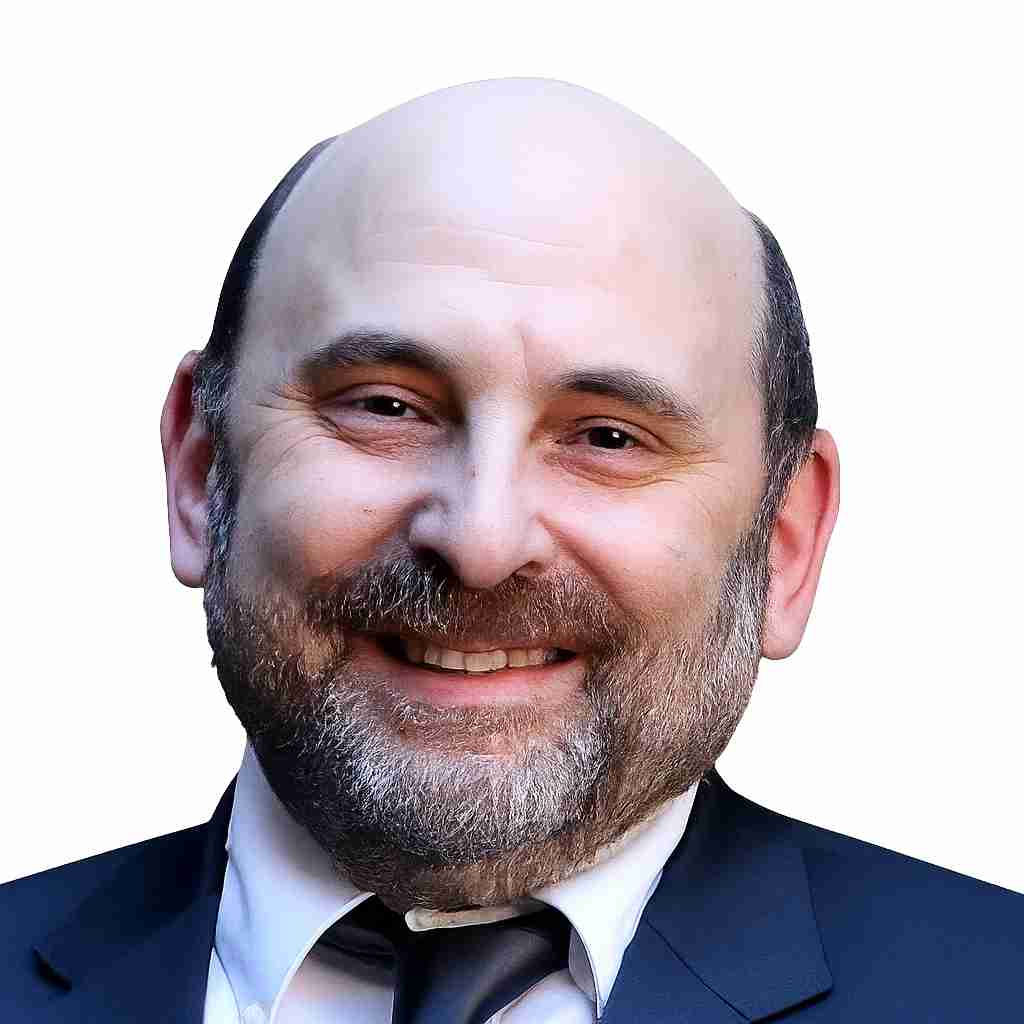
Sam Saltiel
Senior Group Director in Product Engineering , Cadence
Senior Group Director in Product Engineering , Cadence
Sam was a member of the early team at BETA and holds a Doctorate in Mechanical Engineering. Over the past 35 years, he has served as a software developer, customer service engineer, and, until recently, as Chief Communications Officer and Head of Customer Service. He is currently a Senior Group Director in Product Engineering and a member of the Board of Directors at BETA CAE Systems International.
View Info
Hide Info
Why is it that all of us—employees and companies alike—are chasing innovation? Is it really as essential as we think? And if it is, why does it seem so hard to achieve? Are there guiding principles, perhaps even simple habits, that can help us spark true breakthroughs? Or are there hidden obstacles we must avoid at all costs?
These are some of the questions this talk will seek to answer, drawing on examples from history and on the speaker’s own personal experience.

Athanassios Mihailidis
, School of Mechanical Engineering, Aristotle University of Thessaloniki
, School of Mechanical Engineering, Aristotle University of Thessaloniki
Prof. Mihailidis was born in Thessaloniki and studied Mechanical and Electrical Engineering at Aristotle University of Thessaloniki, where he also earned his PhD in Mechanical Engineering. He joined the School of Mechanical Engineering as a Lecturer and advanced through the ranks to Full Professor.
In 2010 he succeeded the late Prof. Athanassiadis as Director of the Laboratory of Machine Elements and Machine Design. After retiring in 2022, he was honored with the title of Professor Emeritus.
Prof. Mihailidis has taught courses in Machine Elements, Tribology, Automotive Engineering, and Engineering Design. He has supervised more than 20 doctoral dissertations in Greece and abroad and continues to mentor PhD candidates. His research output includes over 100 published papers.
He is a founding member of the Balkan Tribological Association and the Balkan Association of Power Transmissions, and a member of WiGeP (Wissenschaftliche Gesellschaft für Produktentwicklung).
View Info
Hide Info
The present keynote outlines the development of a hybrid digital twin and AI-based framework for marine shaftline monitoring and bearing condition prognostics, aiming at real-time bearing load estimation without invasive measurements. The approach integrates shaft alignment theory, bearing modeling, and Multiphysics simulation with machine learning to enable predictive insights into propulsion system health.
The work has been advanced through two three-year research projects, i-Marine and S-PRISMoID, during which small- and medium-scale experimental facilities were established, alongside the creation of a physical twin of an operating vessel. These platforms enable both controlled laboratory validation and real-world pilot testing of the framework.
Looking ahead, the vision is to transition from research to industrial implementation by developing standardized monitoring protocols, embedding predictive maintenance strategies, and collaborating with classification societies to shape regulatory frameworks. This approach is envisioned to contribute towards safer, reliable, and more efficient marine propulsion systems.
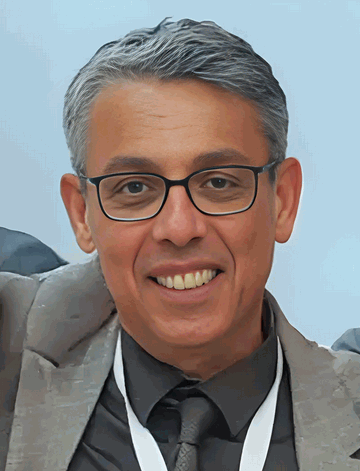
Christos Papadopoulos
Professor, National Technical University of Athens - Polytechnic
Professor, National Technical University of Athens - Polytechnic
Christos Papadopoulos is a Professor at the School of Naval Architecture & Marine Engineering of the National Technical University of Athens, joining the faculty of the Department in 2007. He holds a Diploma in Naval Architecture & Marine Engineering (1997) and a Ph.D. in Marine Engineering (2001), both from NTUA. His research activities include hydrodynamic lubrication of journal and thrust bearings using Computational Fluid Dynamics (CFD), effects of artificial surface texturing on the performance of lubrication contacts, dynamics of marine propulsion and power transmission systems, shaft alignment of marine propulsion systems, numerical simulation of sound propagation and sound-structure interaction, and modeling and identification of dynamical systems, with emphasis on coupled structural acoustic systems. He teaches Mechanical Drawing, 3-D Computer Aided Design, Machine Elements, Ship Propulsion Systems, Ship Auxiliary Systems and C++ Programming. He serves as a regular reviewer of more than 30 journals in the fields of Marine Engineering, Tribology, and Vibrations/Acoustics. His research work includes more than 85 peer-reviewed publications in journals and international Conferences; it has received over 1200 citations. He has received the Best Paper Award by the Microturbines & Small Turbomachinery Committee of the American Society of Mechanical Engineers (ASME) in June 2010, and a Scientific Award for Excellence by the Greek Ministry of Education in December 2012. He has participated in several research projects funded by the EU, the Greek Government and the industry. He has long experience as a consultant to the Maritime Industry, in the field of marine engineering, with emphasis on shaft alignment calculations/measurements, FEM/CFD analyses, vibration and acoustics measurements and calculations. He has been involved as a technical expert in more than 20 cases of accidents/failures of mechanical components or systems in the maritime industry. He is also co-founder of ShipReality Inc., a technology startup focused on developing next-generation mixed reality (MR) software for maritime industry digitalization, automation and sustainability.
View Info
Hide Info
Olympic Hall III
View Info
Hide Info
Modern GPU hardware provides ray tracing acceleration, letting us achieve the performance needed for real-time interactive rendering of FEA models. We built on the existing graphics kernel of our software to implement a path tracing mode, utilizing hardware accelerated ray tracing with Vulkan. We share the underlying OpenGL memory resources and data of the graphics kernel with Vulkan without duplication, using Vulkan for path tracing and OpenGL for rasterization. In the presentation we will show how Vulkan ray tracing works, how we share the existing graphics kernel data with Vulkan, how high-performance memory transfers are performed. Also, we present how we used a modern shader language for path tracing shader authoring, giving high priority to minimizing shader permutations. We show how we shared the path tracing shader code with the OpenGL implementation of the SPH renderer. At last, we show how 3rd party libraries were customized and used. The Intel Open Image Denoiser which is an AI U-Net based denoiser and Mesa llvmpipe (OpenGL) and lavapipe (Vulkan) for software fallback.

Georgios Ouzounoudis
Cadence
Cadence
Georgios Ouzounoudis is a Principal Software Engineer in the BETA CAE Systems Graphics Team. He spearheaded the overhaul of META Graphics Kernel, expanding and unifying it with ANSA and researching for new ways to accelerate rendering of FEA models. He loves writing shaders and re-thinking solutions for problems with massive parallelism in mind.
View Info
Hide Info
We present the cloud transformation of SPDRM, BETA CAE Systems’ process, data and resource management platform.
We follow the journey of SPDRM from an on premises product to a fully cloud-native application, highlighting its ongoing improvements.
The platform integrates cloud-native storage, elastic scalability and secure site-to-site transfers across AWS, Azure and on-premises networks while balancing portability, latency and performance constraints.
Our end-to-end testing strategy combines load and stress testing with Concurrent Automated Benchmarking (CAB)—orchestrating up to 250 ANSA workers—and large-scale workflows with 60 concurrent process nodes.
Results confirm the resilience of SPDRM and demonstrate its readiness to scale to thousands of active users.
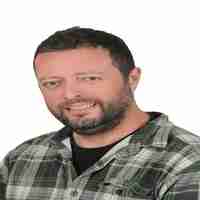
Yannis Koskinaris
, Cadence
, Cadence
Yannis Koskinaris is a Senior Software Engineering Manager at BETA CAE Systems). A lifelong Java engineer with an MSc in Systems Design for Internet Applications (2005), he’s worked on SPDRM since its inception, guiding its evolution and is passionate about server-side development and databases. His team focuses on performance, reliability, and developer experience.

Lydia Tsami
Cadence
Cadence
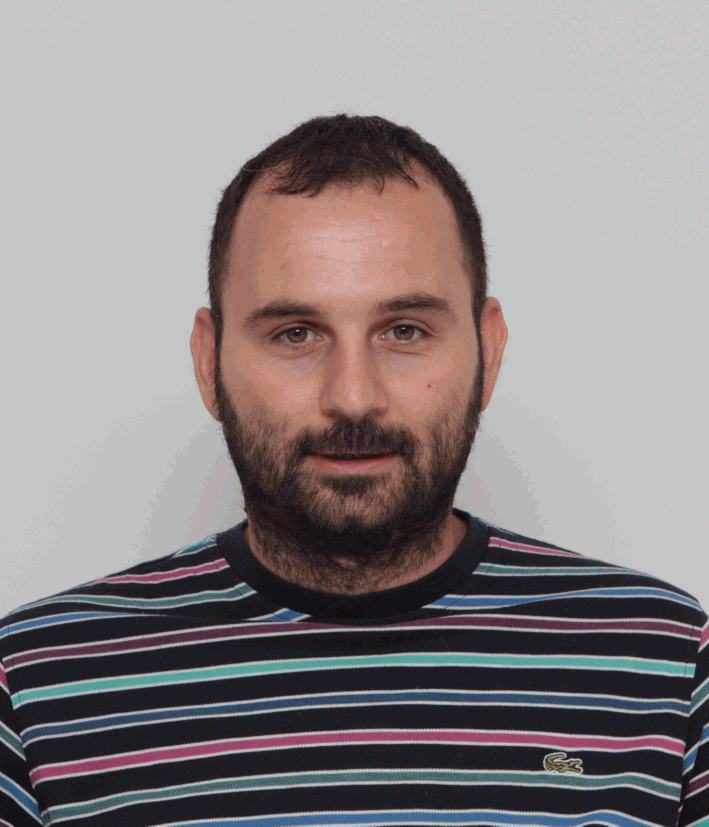
Evangelos Spathas
Cadence
Cadence

Alexios Ampatzis
Cadence
Cadence
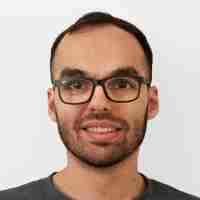
Dimitris Tsitselas
Cadence
Cadence
Dimitrios Tsitselas earned his degree in Electrical and Computer Engineering and is currently pursuing a Master’s in Artificial Intelligence. He works as a Lead Software Engineer on the SPH Solver team, focusing on geometric algorithms and multibody simulation. His role involves building high-performance solutions for complex physical simulations and computational geometry challenges. Dimitris is passionate about numerical methods and scalable computing for engineering applications.
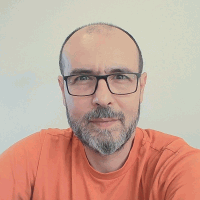
Evangelos Parlantzas
Cadence
Cadence
Evangelos Parlantzas is a Senior Software Engineering Manager at Beta CAE Systems, where he has spent over two decades. He leads R&D in seam welds modelling and proximity detection. He holds a degree in Electrical and Computer Engineering from the Aristotle University of Thessaloniki. Passionate about innovation, mentoring, and research, Evangelos is committed to high-quality engineering through thoughtful, collaborative work.
View Info
Hide Info
KEYWORDS –
Full frontal impact, Optimization, Kinematics, Predictions, Clustering, ANSA, META, KOMVOS, ANSERS
ABSTRACT –
Crashworthiness is a critical aspect of vehicle development requiring effective dissipation of kinetic energy during collisions to protect occupants. Subsequently, optimizing Body-in-White (BIW) structures for crash performance involves addressing complex interdependencies among time sensitivity, material behaviour, and key performance indicators. Capturing and understanding kinematics within the optimization process is essential for generating design variants that meet crash requirements effectively, and the use of specialized software streamlines and facilitates this complex task.
This project investigates new methods for capturing full frontal crash kinematics, comparing their efficacy with existing optimization approaches and eventually how they complement each other in supporting the generation of improved design variants. All morphing scenarios were implemented in ANSA, while the creation of the Design of Experiments, predictions, and clustering were carried out in KOMVOS. METApost was employed for the creation and computation of deformation lines (defolines), and ANSERS was utilized for the presentation and interpretation of results.
By demonstrating how these methods can accelerate optimization processes, this study aims to contribute to the development of stable crashworthiness designs that enhance vehicle safety.
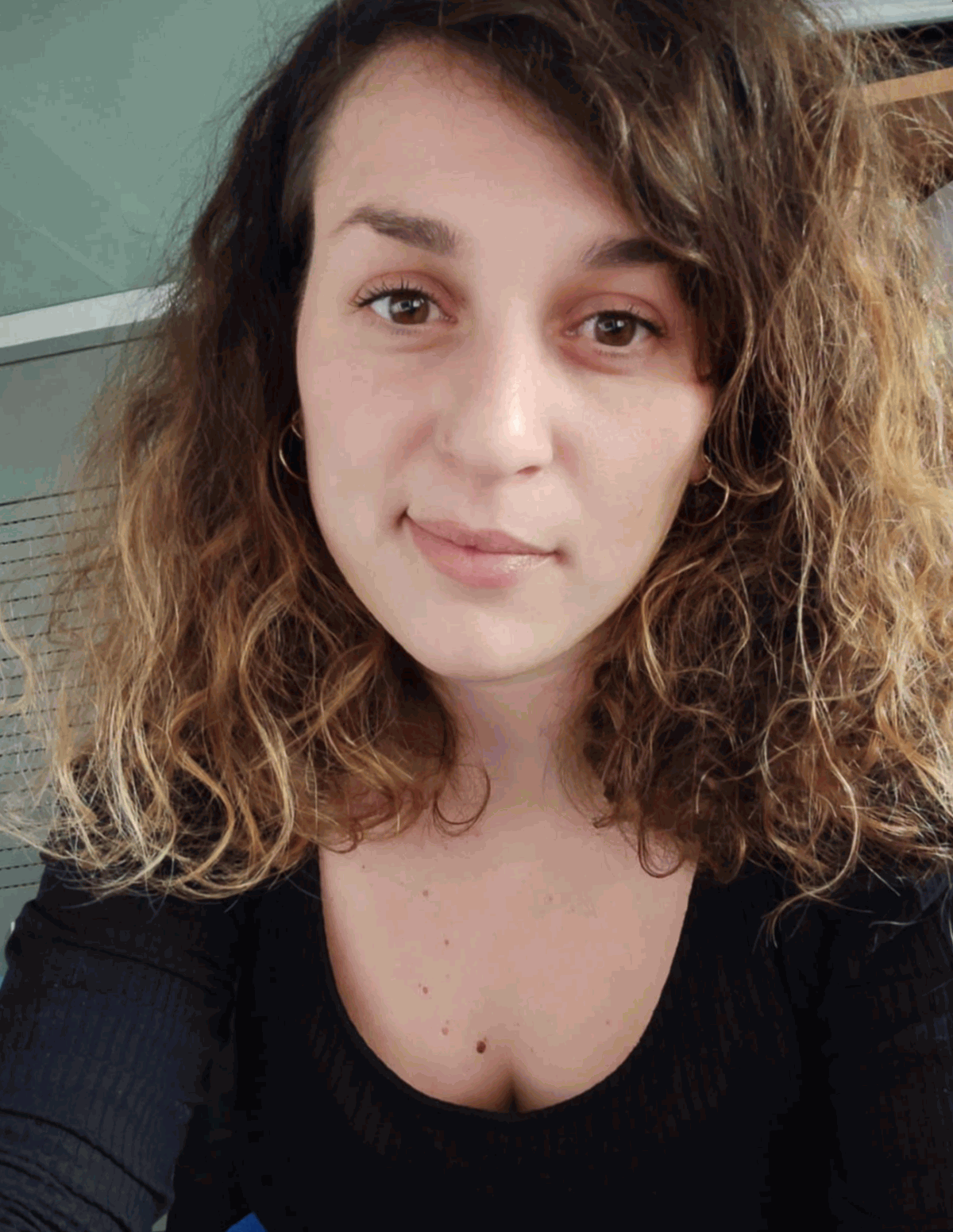
Zafeiria Kanellia
, Cadence
, Cadence
Zafeiria Kanellia has been with Beta CAE Systems / Cadence since 2021 the Customer Service Engineering team. She holds a diploma in Mechanical Engineering from the Aristotle University of Thessaloniki and was an active member of the Aristotle Racing Team for two years. Outside of work, she loves exploring places off the tourist map and riding her motorcycle.
Michael Tryfonidis
Cadence
Cadence
View Info
Hide Info
KEYWORDS –
EMC/EMI Electromagnetic Simulation
ABSTRACT –
As modern vehicles integrate increasingly complex electronic systems, ensuring electromagnetic compatibility (EMC) and performance has become a critical aspect of automotive design.
This presentation explores a workflow for full vehicle electromagnetic simulation using ANSA for pre-processing and Clarity for high-fidelity electromagnetic analysis. We demonstrate how ANSA’s advanced meshing and model preparation capabilities streamline the setup of large-scale simulation models, while Clarity’s cutting-edge solver technology enables accurate prediction of electromagnetic behavior across a wide frequency spectrum.

Nikolas Drivakos
, Cadence
, Cadence
Nikolas Drivakos is a Mechanical Engineer with a PhD in Machine Elements and Machine Design from Aristotle University of Thessaloniki. For nearly two decades, he has been contributing to BETA, where he leads the team responsible for ANSA meshing, model build in Customer Service. His work focuses on advancing simulation workflows and ensuring high-fidelity modeling for complex engineering challenges. He combines deep technical knowledge with a hands-on approach to problem-solving. Nikolas is passionate about continuous improvement and mentoring the next generation of engineers.
View Info
Hide Info
IGA surfaces are rendered as NURBS surfaces. The traditional way to render them was to perform triangle tessellation with a fixed step on the CPU and upload the triangles on the GPU. This would mean that for post-processing, we would need to tessellate triangles separately for each loaded state ahead of time. Instead, we present a GPU accelerated way of rendering NURBS surfaces with the help of the GPU hardware tessellator and trimming them on the pixel shader. We show how we manage to render the surfaces using the initial surface data, like control points, knot-vectors and trim-curves with minimal pre-processing.
We present how we expanded this tech to Catmull-Clark subdivision, using the tessellation shader to accelerate it. The traditional way was to subdivide the surface recursively until reaching the desired subdivision step on the CPU and render the resulting quads on the GPU. Now, based on surface features, they are separated into regular and irregular sub-surfaces, with only the irregular surfaces being a candidate for further subdivision and the regular ones being forwarded to the GPU hardware tessellator.
At last, we present how this technology was used to make Higher Order Elements’ rendering simple, fast and high quality.

Georgios Ouzounoudis
Cadence
Cadence
Georgios Ouzounoudis is a Principal Software Engineer in the BETA CAE Systems Graphics Team. He spearheaded the overhaul of META Graphics Kernel, expanding and unifying it with ANSA and researching for new ways to accelerate rendering of FEA models. He loves writing shaders and re-thinking solutions for problems with massive parallelism in mind.
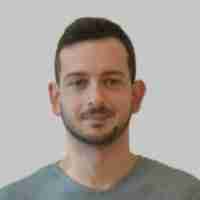
Tasos Orfanidis
Cadence
Cadence
Anastasios Orfanidis received his Diploma in Mechanical Engineering from the University of Thessaly, followed by an MSc in Computational and Software Techniques in Engineering from the University of Cranfield. He joined BETA in 2020 as part of the Mathematical Research Team. His work focuses on GPU-accelerated geometry processing and surface evaluation algorithms for computer graphics, with an emphasis on exploiting modern hardware capabilities to achieve maximum efficiency and performance.

Ionanis Fotiadis
, Cadence
, Cadence
I currently serve as Senior Software Research and Development Manager at BETA CAE Systems, focusing on the Morphing Tool of ANSA. I joined BETA in 2009. I hold a diploma in Mechanical Engineering from the Aristotle University of Thessaloniki and a Master’s degree in Computer Science. Outside of work, I’m a proud father of two daughters.

Giorgos Strofylas
Cadence
Cadence
Giorgos Strofylas is a Mechanical Engineer with a PhD in Aerospace Engineering, specializing in parametric design, optimization, and Fluid-Structure Interaction (FSI). Over the past decade at BETA CAE Systems, he has contributed to the CFD Decks department by developing advanced tools that streamline CFD simulation workflows and boost computational efficiency. With deep expertise in computational algorithms and scientific computing, Giorgos focuses on delivering robust, scalable solutions for high-performance numerical modeling and simulation.
Theodoros Athanasiadis
Cadence
Cadence
View Info
Hide Info
The design of rail vehicles is central to ensuring performance, safety, and efficiency in an increasingly complex transport landscape. This presentation highlights the pivotal engineering innovations that addressed Stadler Rail A.G.’s critical needs and ultimately led to the adoption of BETA CAE’s solutions.

Haris Bezdemiotis
, Cadence
, Cadence
Bezdemiotis Haris holds a degree in Mechanical Engineering from Aristotle University of Thessaloniki. Since 2018, he has been part of the Customer Service team at BETA CAE Systems, supporting Geometry, Mesh and Model Build applications.
View Info
Hide Info
Breakfast/Lunch will be held at Athos, main hotel restaurant
View Info
Hide Info
Version 25 marked a transformative leap in the evolution of the ANSA and META platforms, introducing a ribbon-based interface that redefined usability and productivity. By replacing legacy toolbars and modules with a modern, intuitive layout, we delivered a cleaner, more structured user experience that empowers engineers to work smarter and faster.
This presentation will explore the design philosophy behind the v25 overhaul, the measurable impact on user workflows, and the lessons learned from past iterations. More importantly, it will chart a course for the future—highlighting how we must continue to evolve our interface strategy to meet emerging user needs, embrace flexibility, and foster innovation across our product ecosystem.

Dimitris Zafeiropoulos
, Cadence
, Cadence
Dimitris Zafeiropoulos leads the Meshing R&D Team within the Geometry Division of ANSA, bringing over 25 years of experience in simulation-driven design. With a PhD in Computer-Aided Engineering, he has played a pivotal role in advancing meshing technologies and user interface innovation, including the recent ribbon-based UI transformation in ANSA.
Christos Sachanas
Cadence
Cadence
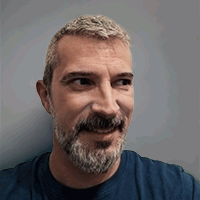
Nikos Kostakis
, Cadence
, Cadence
Nikos Kostakis is the UI/UX manager at BETA CAE Systems. He leads the design team in the GUI department, where they focus on creating intuitive and consistent UIs for complex engineering software. With over nine years of expertise in UI design, he specializes in building and maintaining scalable design systems and crafting pixel-perfect iconography. His multidisciplinary background in visual communication spans digital product design, motion graphics for live TV broadcasts (sports events, including MXGP), and brand identity development. Nikos is passionate about bridging aesthetics and functionality, ensuring that design elevate the overall user experience without compromising performance.
View Info
Hide Info
KEYWORDS –
CAE, Multi-Step TPA, Modal Contribution, Sub-Structuring
ABSTRACT –
In the field of Noise, Vibration, and Harshness (NVH) car development, efficient root cause analysis plays a critical role in identifying and resolving unwanted disturbances that affect vehicle comfort and performance. In this context, it is crucial to identify the key components driving a specific NVH-related phenomenon and to understand how excitation propagates through the system, from the point of introduction to the receiver component, where passengers perceive the disturbance.
BETA CAE Systems has developed an advanced analysis method within its FEM NVH software to effectively investigate such challenges. The core concept involves decomposing the vehicle system into subsystems, which are then assembled using a numerically efficient and accurate frequency based sub-structuring (FBS) method. This approach facilitates well-established root cause analysis techniques, such as Transfer Path Analysis (TPA), and enables the integration of hybrid CAE-test models by incorporating measured frequency response functions for select components.
In the latest version of the BETA CAE NVH software, two groundbreaking root cause analysis techniques have been introduced, both novel in the market, which will be presented in this paper.
First, the TPA analysis has been elevated to a new level. The software automatically performs a multi-step TPA. A cascade of TPAs is performed, which determines the dominate path through the complete system step by step indicating the relevant components and the connections between components from the excitation point to the response point, e.g., from the tire patch to the steering wheel.
A second exclusive feature allows modal contributions to be calculated for each CAE component. Previously, modal participation could only be examined for the receiver component. The newly introduced capability provides deeper insights into how individual modes of various components influence the overall system behavior.
In the first part of the presentation mainly the new TPA techniques are introduced and applied on a practical use case and in the second part the implementation challenges for this feature are discussed.
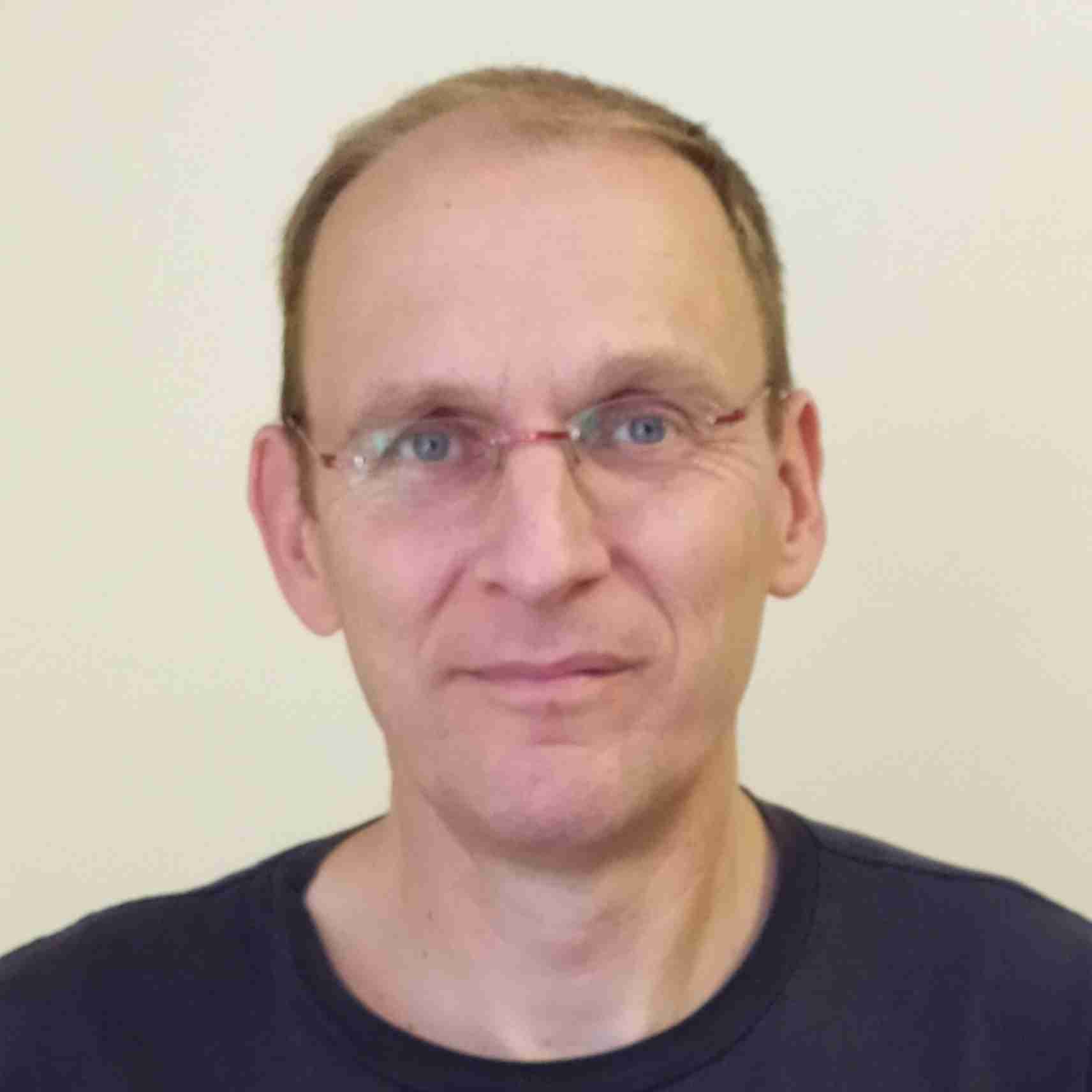
Markus Herbst
, Cadence
, Cadence
Markus Herbst studied physics at WWU Münster and completed his PhD in theoretical solid-state physics in 2000. After a postdoctoral position at Hitachi Labs in Cambridge, UK, he joined the Ford Motor Company in Cologne, Germany in 2001, where he worked as a CAE engineer in the Body NVH department. He also began a teaching career in 2006, serving as a lecturer and professor at RFH Cologne. In 2017, he joined BETA CAE and has since been working in the customer service department. His expertise encompasses both the theory and application of NVH, particularly in the context of the finite element method.

Athanasios Mademlis
Cadence
Cadence
Athanasios Mademlis has received the Diploma degree in Electrical and Computer Engineering and the Ph.D. degree in Electrical and Computer Engineering both from Aristotle University of Thessaloniki, Greece, in 2004 and 2009, respectively. He has worked as a researcher for Informatics and Telematics Institute of Centre for Research and Technology Hellas, and as a software developer in the private sector. He is working in the R & D department of BETA CAE systems since 2017.
View Info
Hide Info
Join us for an in-depth look at how SubD modeling in ANSA is helping to bridge the gap between design and engineering. SubD surfaces offer a powerful and intuitive approach for creating complex, smooth geometries, which can be especially valuable when working with optimization results and help to overcome the communication challenges between CAD and CAE. In this session, we will share the story behind our recent advancements in this area, which were developed in close collaboration with the BIONICAST team at Mercedes-Benz and enable efficient optimization workflows for casting and forged parts. We will showcase how the tools we developed -now part of the Retopology ribbon- support design modifications and manufacturability checks within ANSA and aim to deliver ready-to-use design iterations back to CAD with the help of SubD surfaces.
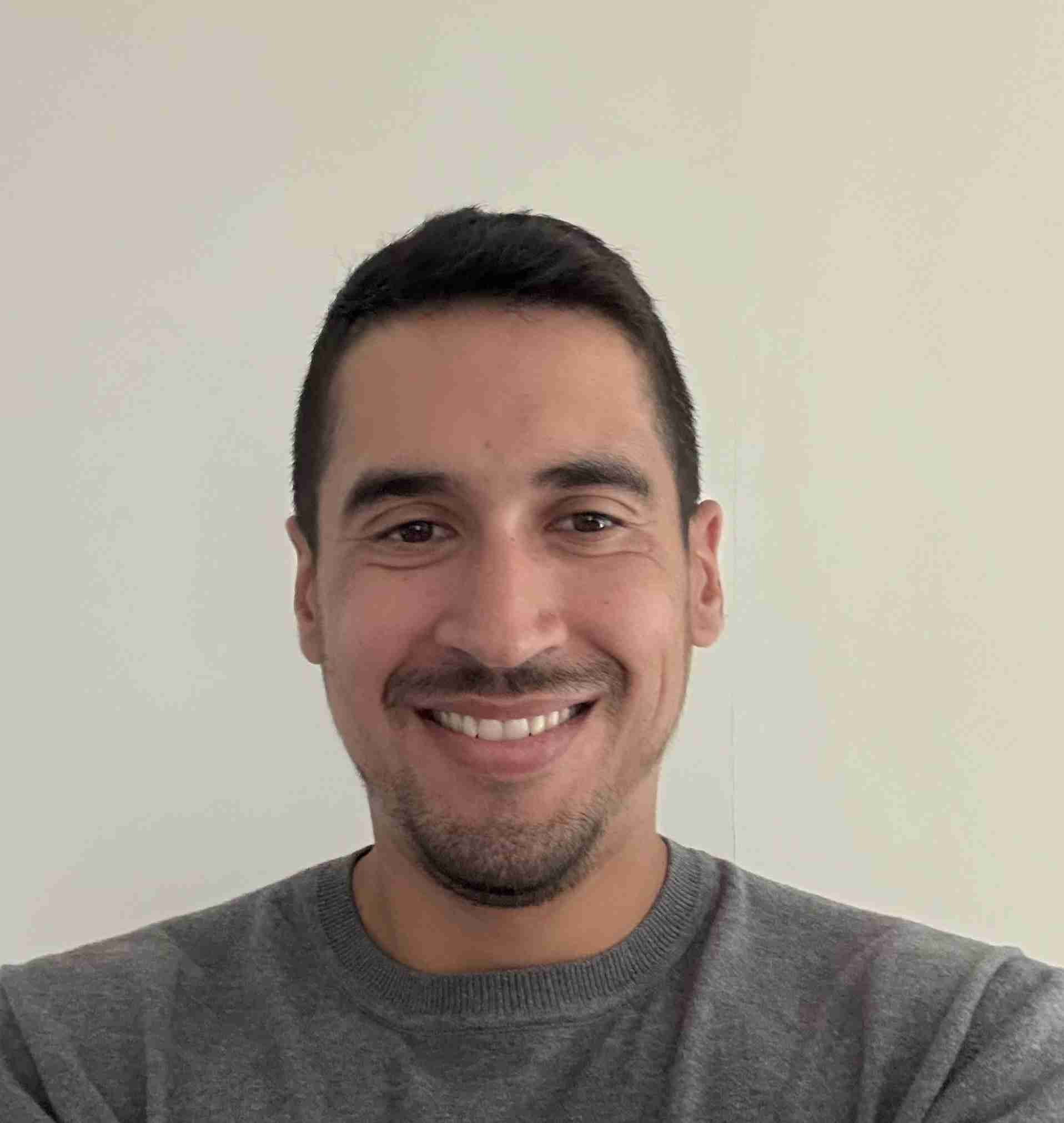
Apostolis Poulias
, Cadence
, Cadence
Apostolis Poulias is a Lead Software Engineer based in Thessaloniki, with a degree in Mechanical Engineering from the National Technical University of Athens (NTUA). After starting his career in customer service, he transitioned into software development. He enjoys combining his experience in both roles to solve problems effectively and build solutions that meet user requirements.
Konstantinos Kafkalas
,
,
View Info
Hide Info
Modular approach of reduced models enables efficient structural and dynamic analyses by significantly reducing computational demands without compromising accuracy.
Inherent challenges emerge with the development of reduced models. The definition of reduced models requires expert knowledge and is often the result of a try and error approach to achieve a balance between simplification and accuracy in encapsulating the complete model’s main characteristics. Then, the creation of alternative representations of reduced models, as well as the creation of new reduced model versions for every modification of the detailed FE-representation of the model, unveil another inherent weakness of the standard practices; The lack of traceability, that completely hinders collaboration between simulation engineers.
The implementation of a Simulation Process and Data Management (SPDM) system represents a transformative approach to managing simulation workflows and data. On the data management side, such a system enables generating various reduced model types and maintaining traceability of source models and dependencies, it ensures end-to-end transparencies and allows effortless transitions between full FE and reduced representations. Moreover, the system significantly enhances "what-if" analyses and optimization processes by properly documenting simulation iterations, enabling clear and comprehensible comparisons between variations. On the process management front, SPDM systems facilitate the standardization and automation of CAE workflows. These capabilities lead to the automation of generating reduced models and the submission of reduction runs to the solvers on the HPC systems, followed by systematic storage of results linked to their respective reduced models.
SPDM systems address critical challenges in simulation model preparation and analysis, including data sharing, integrity, traceability, and version control. Ultimately, adopting SPDM systems not only accelerate the end-to-end simulation process but also fosters innovation and productivity across engineering teams.

Konstantinos Anagnostopoulos
, Cadence
, Cadence
He is an Application Engineer with the area of expertise being in the Simulation Process and Data Management and holds a Master of Science in Artificial Intelligence. With a robust academic background and practical experience, his is committed to contributing to the development and optimization of simulation applications by improving processes, developing tools and conducting research and analysis to drive innovative solutions. He is part of BETA CAE Systems since January of 2021.
Dimitris Daniel
Cadence
Cadence
View Info
Hide Info
In the CFD domain, one of the major challenges is establishing a streamlined workflow that efficiently bridges the gap between design and CFD results. At ANSA, we have successfully addressed this challenge over the past years. Within this workflow, CFD meshing plays a pivotal role, especially when dealing with dirty CAD inputs or tessalations (CAD Chaos), a common scenario among automotive OEMs. The HeXtreme mesh generator offers a robust solution by delivering fully automated CFD meshes for external aerodynamic analysis and beyond. In this presentation, we begin with an overview of the streamlined workflow, followed by an in-depth look at the HeXtreme generator. We present an algorithm overview, challenges handling big meshes, and feature direction towards modular and distributed runs. Finally, we introduce AutoSeal, another key functionality that enables full automation of the HeXtreme process, achieving 100% workflow automation.

Savvas Bollas
, Cadence
, Cadence
Savvas Bollas is an Electrical and Computer Engineer, a graduate of the Aristotle University of Thessaloniki. He began a PhD in Embedded Systems but soon transitioned into industry after being offered a position at BETA CAE Systems. Drawn by the real-world challenges and opportunities, he chose to fully dedicate himself to software engineering. For the past 14 years, Savvas has been a key contributor at BETA CAE, focusing on the development and optimization of preprocessing workflows in CAE simulation. His expertise lies in the volume-to-surface approach, where he not only drives technical innovation but also mentors and inspires the team’s emerging engineering talent.
Stathis Chazaridis
Cadence
Cadence
View Info
Hide Info
This presentation showcases how modern development tools can elevate engineering workflows through intelligent automation and seamless integration. We begin with Visual Studio Code (VSCode), highlighting essential features such as autocomplete, problem recognition and debugging. We extend into the enhancements of the BCS Dev Environment plugin, enabling direct documentation access and execution within the BETA Suite. We then dive into GitHub Copilot’s AI-powered capabilities, including smart code completion, code explanation, code review, and automated code generation. Engineers will gain practical insights into how these tools can accelerate development, improve code quality and enhance productivity.
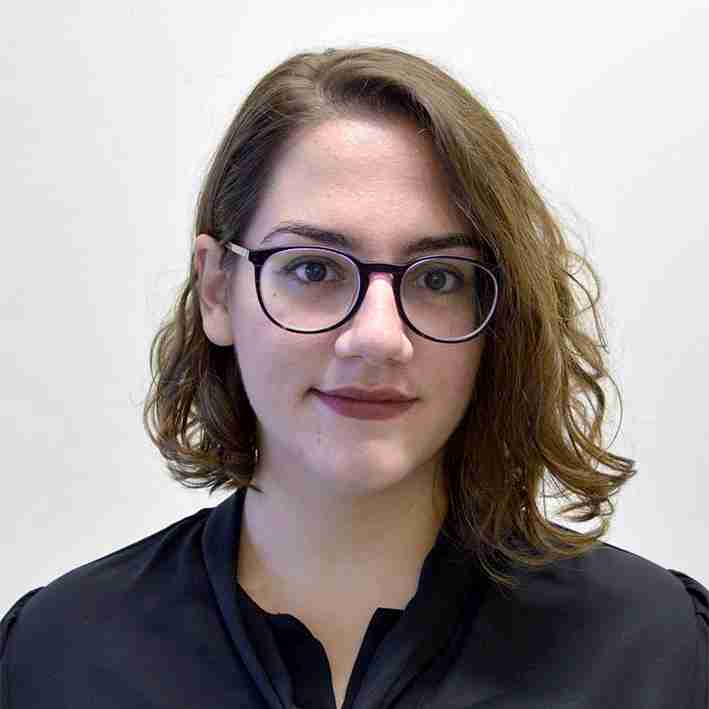
Athina Ioakeimidi
, Cadence
, Cadence
Athina Ioakeimidi (she/her) is a Software Engineer at BETA CAE Systems, where she has been part of the Python Development Team for the past 4 years. She holds a diploma in Electrical and Computer Engineering from the National Technical University of Athens (2021). Athina specializes in developing Python-based tools and projects, both for customer applications and core functionality. Her work focuses on enhancing performance, maintaining existing solutions, and providing expert support in Python programming, the BETA Suite API, and Visual Studio Code. In her presentation, she will share insights from her experience in Python Development with Visual Studio Code and Copilot, highlighting practical solutions and development strategies.
View Info
Hide Info
Olympic Hall III
View Info
Hide Info
In the new era of AI-assisted development, emerging tools are transforming the way we write and maintain code. Among them, GitHub Copilot stands out as a powerful assistant for developers. It is offering access to multiple AI models that support a wide range of programming tasks. Many developers view Copilot as an ideal partner for pair programming.
At BETA CAE, the deployment of GitHub Copilot opens exciting opportunities for C++ development. One of the most impactful benefits is its ability to bridge the gap between our isolated intranet environment and the vast knowledge available on the internet.
In this session, we’ll explore a selection of Copilot’s capabilities, including:
While GitHub Copilot can significantly boost productivity and code quality, it also introduces new responsibilities. We’ll conclude with practical advice on how to use the tool effectively, avoiding common pitfalls and misuse.

Ionanis Fotiadis
, Cadence
, Cadence
I currently serve as Senior Software Research and Development Manager at BETA CAE Systems, focusing on the Morphing Tool of ANSA. I joined BETA in 2009. I hold a diploma in Mechanical Engineering from the Aristotle University of Thessaloniki and a Master’s degree in Computer Science. Outside of work, I’m a proud father of two daughters.
View Info
Hide Info
Inverse Distance Weighting (IDW) is a widely used spatial interpolation method for estimating unknown values at evaluation points based on known control points. Its core principle is simple: points closer to the target location have greater influence on the estimated value than those farther away. This makes IDW particularly suitable for applications like mesh morphing.
While conceptually straightforward, a naïve IDW implementation has O(mn) complexity, which can be prohibitively expensive for interactive applications—especially when dealing with large-scale CFD models.
In this session, we will:
• Review the fundamentals of IDW interpolation.
• Explore algorithmic optimizations that significantly accelerate IDW on CPUs.
• Demonstrate how leveraging GPU computing can deliver orders of magnitude performance improvements over the basic algorithm.
• Showcase our in-house CLI API that abstracts the complexity of OpenCL, making GPU acceleration accessible and easy to integrate.
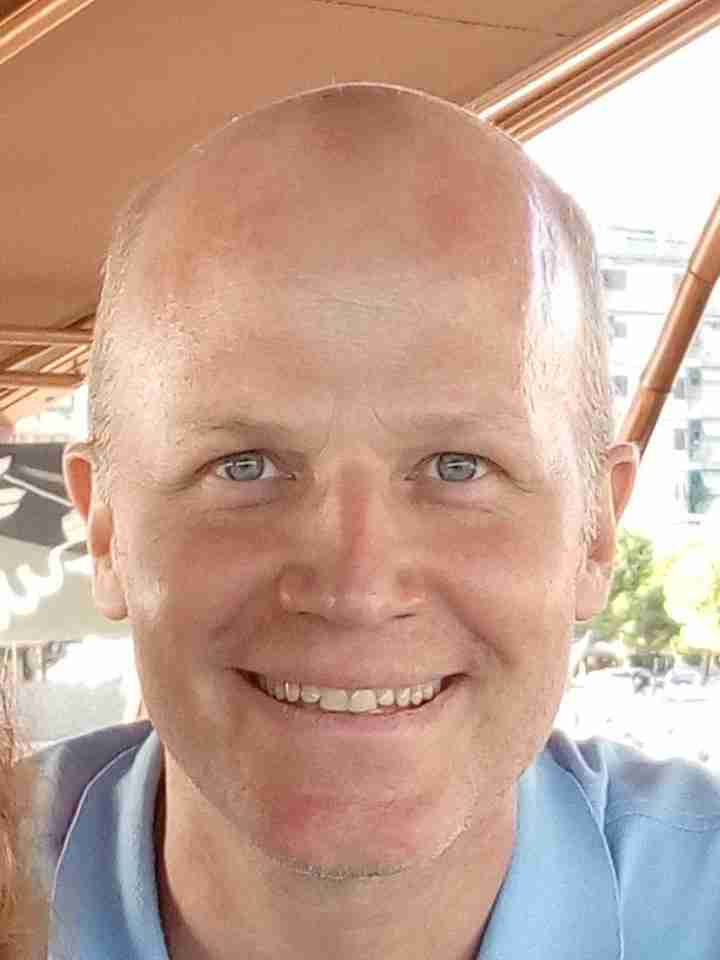
Vangelis Skaperdas
Cadence
Cadence
Vangelis Skaperdas is the Engineering Director of the CFD team of Customer Service at BETA CAE. He studied Aeronautical Engineering at Imperial College and holds a master’s degree in Automotive Engineering from Cranfield University.
He joined BETA CAE in 2001. Since then his focus is to help enhance ANSA and META functionality in the CFD field, so as to grow throughout the motorsports and automotive sectors but also in other industries like the aerospace and defense.
He leads a team of ten engineers who share his goal of excellence in the customer service of the two software, helping build the best reputation throughout the industry.
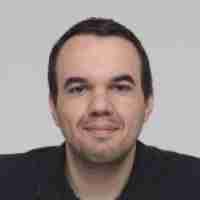
Stelios Karapantazis
Cadence
Cadence
Stelios Karapantazis graduated from the department of Electrical and Computer Engineering at Aristotle University of Thessaloniki. He holds a PhD in telecommunication networks. Since 2008, he has been working in BETA CAE Systems as a member of the META development team. He has contributed to various project, such as the development of software reporting solutions and the compression of 3D data and simulation results.
View Info
Hide Info
The CFD domain has been notoriously known for the time and energy resources which are required for the production and analysis of volume models. The volume elements count keeps increasing, only to be limited by the exponential increase of available computation and power resources, which are currently available to analysts. With great power also come great delays in model preparation. The meshing process for such models requires significant time, which could otherwise be dedicated to more productive tasks. Things get worse when engineers need to account for the creation of different model variants and several design iterations for each one of them.
Time and energy management issues due to the complexity of current models are a common issue among several engineering fields. The above challenges faced by CFD teams have also been reported in the structural domain. This is where BETA first successfully introduced the Modular Management methodology, an approach which promotes re-usability and modularity in the process of model preparation. At the core of this concept lies the idea that several parts of the model usually remain intact throughout endless iteration design cycles. Such sub-models could be prepared once and re-used several times as is, thus, reducing time and computational demands without any compromises in the accuracy of results.
This presentation introduces an implementation of the Modular Management approach, tailored to the needs of the CFD domain. A full volume meshed model is split into components, which can be re-used in different model variant scenarios, thus decreasing the volume preparation time for the entire model to an absolute minimum, enabling engineers to achieve greater productivity and faster turnaround times.
Konstantinos Ntamagkas
(BETA CAE Systems, Greece)
Dimitris Skoutelakos
(BETA CAE Systems, Greece)
Vicky Moshcou
(BETA CAE Systems, Greece)
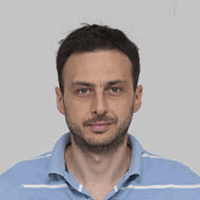
Konstantinos Ntamagkas
, Cadence
, Cadence
Konstantinos Ntamagkas is a Senior Software Engineering Manager with almost 20 years of experience in RnD at BETA CAE Systems, having successfully contributed to major company milestones. He graduated from the department of Electrical and Electronic Engineering at Aristotle University of Thessaloniki and holds a MSc in Telecommunications. He is passionate about driving innovation and improving processes. He is proud to be part of this company's journey, while committed to fostering collaboration and creativity, maintaining team morale and ensuring every team member feels their contribution matters.
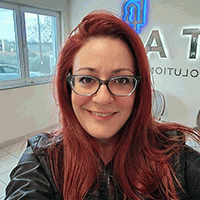
Vicky Moschou
Vicky Moschou is a Software Engineer with an MSc in Digital Media/Machine Learning and an interdisciplinary PHD in Systems Physiology, bridging Computer Science and Medicine. She joined BETA in 2008 and currently serves as a Senior Software Engineering Manager at Cadence, specializing in Computational Fluid Dynamics (CFD) on the ANSA side. She leads a team with extensive experience in core ANSA technologies and CFD solvers’ integration. Among others, her work focuses on implementation of innovative tools, performance optimization and memory efficiency to deliver high-quality CFD software solutions.
View Info
Hide Info
KEYWORDS
Python, C++, NumPy, acceleration, JIT, AOT, compilation, GPU
ABSTRACT
Python code, often seen as slow for numeric workloads, can be transformed into a high performant code, easily switching from proof-of-concept prototype scripts into production-grade compiled code with near-native performance.
We begin with the reasons behind Python’s slow speed and connect them to performance bottlenecks. We then present a range of solutions comprising optimal pure Python code, (Just-In-Time) compilation, translation to C++ and finally offloading work to a GPU.
These approaches will be then demonstrated and benchmarked on select case studies: the N-body benchmark from the Computer Language Benchmarks Game, a thermal diffusion simulation, a linear algebra benchmark (AXPY, GEMV, GEMV+B), an I/O benchmark, and a benchmark based on META's Equivalent Radiated Power (ERP) tool.
Attendees will gain a clear understanding of why Python performance lags, how to accelerate it systematically, and when to apply different tools in practice.

Argiris Radopoulos
, Cadence
, Cadence
Argyrios Radopoulos is a mechanical engineer specializing in computational mechanics, numerical simulation, software development, and business management. He has been with BETA CAE Systems (Cadence Design Systems, SDA business unit) since 2013 in the Customer Service department. His expertise in computational mechanics ranges from classical finite and boundary element methods and computational fluid dynamics to novel approaches such as isogeometric analysis and the finite cell method. He has extensive experience in Python software engineering, developing novel and robust tools for engineering design and simulation, in particular custom tools for META. Beyond his engineering and software work, he is responsible for the documentation of several products as well as developing the guidelines, style guide, and documentation publishing infrastructure of BETA CAE Systems.
View Info
Hide Info
KEYWORDS –
CFD, Aerospace, anisotropy, mesh, ANSA
ABSTRACT –
This presentation will go through the evolution of ANSA towards becoming the benchmark for unstructured CFD meshing for external aerodynamics simulations for the aerospace industry. From early developments and smaller success stories to the defining collaboration with Airbus. Key point to unlock this ever-demanding branch of CFD is the application of anisotropy on both the surface and volume meshes with aim to increase the simulation fidelity without substantial increases on the overall mesh sizes and turnout times. With NASA vision 2030 driving the industry towards higher and higher fidelity simulations and the explosion of computing/solving power through GPUs the related developments significance is becoming more and more profound.
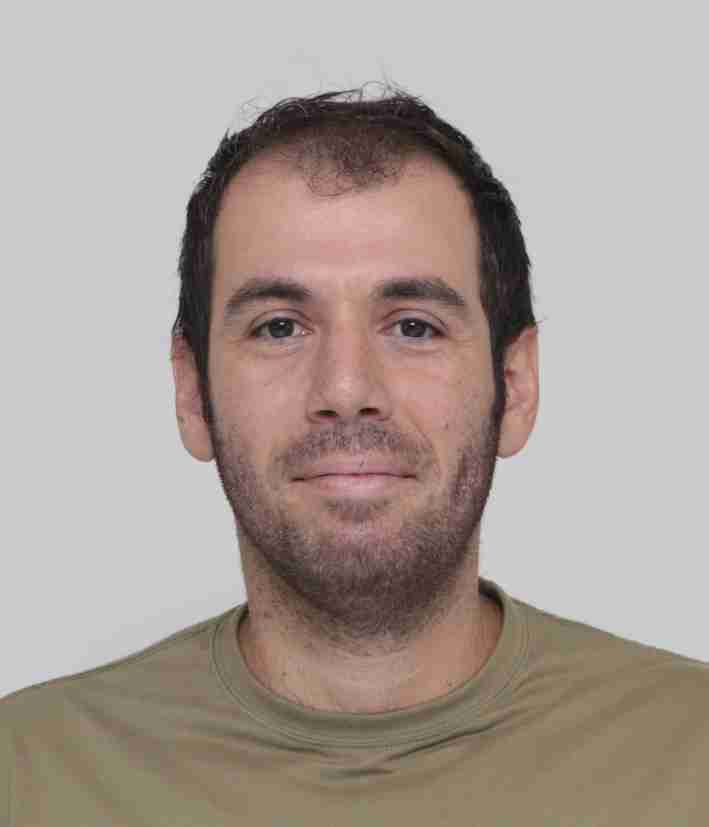
Dimitris Skoutelakos
, Cadence
, Cadence
Dimitris Skoutelakos is a Software engineering manager at BETA. He studied mechanical engineering at the Aristotle university in Thessaloniki and holds a master's in computational science from the technical university of Munich. After working as CFD project engineer for the automotive industry in Germany he joined BETA and the meshing team of ANSA as a software developer. For over a decade he has worked on the expansion of the ansa CFD volume meshing portfolio with primary focus on unstructured volume meshing.
Stathis Chazaridis
Cadence
Cadence

Vangelis Skaperdas
Cadence
Cadence
Vangelis Skaperdas is the Engineering Director of the CFD team of Customer Service at BETA CAE. He studied Aeronautical Engineering at Imperial College and holds a master’s degree in Automotive Engineering from Cranfield University.
He joined BETA CAE in 2001. Since then his focus is to help enhance ANSA and META functionality in the CFD field, so as to grow throughout the motorsports and automotive sectors but also in other industries like the aerospace and defense.
He leads a team of ten engineers who share his goal of excellence in the customer service of the two software, helping build the best reputation throughout the industry.
View Info
Hide Info
Olympic Hall III
View Info
Hide Info
Evening Dinner will be held in Athos Restaurant at 19:30
View Info
Hide Info
Breakfast/Lunch will be held at Athos, main hotel restaurant
View Info
Hide Info
In this Hands-on Workshop, you will have the chance to
To ensure the best experience, please don’t forget to bring your business laptops (fully charged).
Yianni Kolokythas
Cadence
Cadence
Emmanouil Kastrinakis
,
,
Konstantinos Rachoutis
, Cadence
, Cadence
Konstantinos Rachoutis graduated from the Department of Mechanical and Aeronautical Engineering at the University of Patras. He joined BETA CAE Systems almost 3 years ago, working in the Morphing, Optimization, and AI department.

Zafeiria Kanellia
, Cadence
, Cadence
Zafeiria Kanellia has been with Beta CAE Systems / Cadence since 2021 the Customer Service Engineering team. She holds a diploma in Mechanical Engineering from the Aristotle University of Thessaloniki and was an active member of the Aristotle Racing Team for two years. Outside of work, she loves exploring places off the tourist map and riding her motorcycle.
Georgios Nikolaidis
Cadence
Cadence
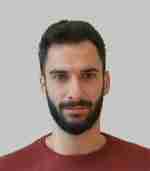
Panagiotis Mantzopoulos
Cadence
Cadence
Panagiotis Mantzopoulos earned his MEng in Mechanical Engineering & Aeronautics from the University of Patras and later pursued an MSc in Computational and Software Techniques in Engineering at Cranfield University. Since 2020, he has been a dedicated member of BETA CAE Systems SA, specializing in Simulation Process and Data Management field. His contributions span across product development, process automation, technical support and presales activities with a particular focus on modular assembly and data management.
View Info
Hide Info
This session presents a live demonstration of Sketch 2D, a parametric 2D sketching ribbon which includes a full suite of sketching tools such as lines, arcs, circles, and splines, alongside dimensioning and constraint management capabilities that enable robust parametric control over geometry.
We will walk through the core functionality of the ribbon, highlighting how 2D geometric entities can be defined, constrained, and modified interactively. The demo will also showcase how Sketch 2D integrates with downstream applications, including:
Furthermore, we shall talk about future goals and integration opportunities.

Gerasimos Pinas
Cadence
Cadence
Gerasimos Pinas is a Lead Software Engineer at BETA CAE Systems with a Diploma in Civil Engineering and a Master of Science degree in Artificial Intelligence from Aristotle University of Thessaloniki. He specializes in developing advanced computational algorithms to solve complex engineering problems. Gerasimos is passionate about blending Software Engineering & Computational Geometry domains with modern approaches and technologies.

Platon Oikonomou Galatis
Cadence
Cadence
Platon Oikonomou Galatis is a Senior Manager at BETA CAE Systems, where he has been working since 2008. He leads a team of five engineers in the Geometry department, focusing on developing tools for CAD modeling and geometric processing. His work centers around geometric algorithms, sketching systems, and robust geometry handling in simulation software. With deep technical expertise and years of hands-on experience, Platon contributes to shaping the core capabilities of BETA's software suite.
View Info
Hide Info
As a leading simulation software vendor, we are shaping the future of engineering through continuous innovation. This presentation outlines our strategic vision for advancing simulation technology, focusing on key developments such as AI, solvers, cloud-native deployment, scalable multiphysics capabilities, and improved platform interoperability. We will highlight how these innovations are driving faster, more accurate simulations and transforming user workflows across industries. Attendees will gain insight into our roadmap for delivering next-generation tools that helping teams across industries to solve increasingly complex challenges with confidence and efficiency.

Dimitrios Siskos
Cadence
Cadence
I was a Chief Technology Officer at BETA CAE Systems until its acquisition by Cadence in 2024. In 2007, I earned a Ph.D. in Mechanical Engineering from Aristotle University of Thessaloniki, Greece.
My journey with BETA CAE began around 1999 when I joined the early team and initiated the development of META post-processor. Since then, I have enjoyed being part of the R&D team, where, together with my colleagues from many functional teams, we drive innovation and push technological advancements across our entire product portfolio.
View Info
Hide Info
Breakfast/Lunch will be held at Athos, main hotel restaurant
Konstantinos Rachoutis
, Cadence
, Cadence
Konstantinos Rachoutis graduated from the Department of Mechanical and Aeronautical Engineering at the University of Patras. He joined BETA CAE Systems almost 3 years ago, working in the Morphing, Optimization, and AI department.
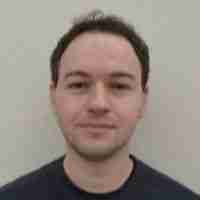
Georgios Petkos
Cadence
Cadence
Georgios Petkos works for Beta CAE Systems / Cadence since 2017. He holds a Ph.D and an M.Sc. in Artificial Intelligence from the University of Edinburgh, as well as a B.Sc. in Applied Informatics from the University of Macedonia. Prior to working for Beta CAE Systems / Cadence, he worked for several years in the Centre for Research and Technology Hellas and the University of Macedonia.
View Info
Hide Info
KEYWORDS –
IGA, Immersed, Geometry, Splines
ABSTRACT –
Splines are used to smoothly approximate or interpolate a set of points. Splines are widely used in computer graphics, CAD, and data fitting because they offer a high degree of control and precision. The most popular Spline geometries are, B-Splines which generalize Bézier geometries by using a set of basis functions. NURBS (Non-Uniform Rational B-Splines), are an extension of B-splines that includes weights, allowing the representation of both standard analytical shapes (circles, spheres etc) and free-form curves - surfaces. THB-Splines (Truncated Hierarchical B-Splines) extend traditional B-splines by introducing a hierarchical structure that allows local refinement of the spline space without affecting the entire domain. Their ability to efficiently represent complex geometries with varying levels of detail makes them a powerful tool in computational geometry and engineering simulations
Isogeometric Analysis (IGA) uses Spline-basis functions for the solution approximation, which ensures exact geometry throughout the analysis process. This eliminates the need for geometry simplification or meshing approximations, reducing errors and improving accuracy. IGA also provides higher continuity across elements, which is especially beneficial in problems involving higher-order partial differential equations.
The aim of this paper is to familiarize CAE community with the terms geometry and analysis on geometry. Introduce them to topics like local refinement on the geometry and unstructured Spline technologies. Moreover, topics like pre-processing models for IGA shell and solid analysis, using untrimmed or immersed techniques, applying tested workflows and best practices from FEA will be covered as well.

Ioannis Chalkidis
, Cadence
, Cadence
Ioannis Chalkidis is currently serving as a Senior Software Engineering Manager, based in Thessaloniki, Greece. Ioannis holds an integrated master and a PhD in Mechanical Engineering from Aristotle University of Thessaloniki, Greece. He joined BETA CAE Systems in 2007 and his expertise is in CAD Data structures, computational geometry and Isogeometric Analysis.
View Info
Hide Info
Meshing, especially for small but highly complex geometries such as embedded clips, is a challenging and time-consuming step in CAE workflows. Our first solution addressed this by automatically scanning parts to detect and segment embedded clips, and then reusing the mesh from historic data (library with meshed clips). However, this early approach was strict: mesh reuse was only possible when the clips were geometrically identical to their source, which limited the overall benefit.
To overcome this, we developed a more flexible methodology based on AI that enables mesh reuse across similar, but not identical, geometries. By extracting local and global features from CAD data, we can group similar clips. Since a mesh taken from one clip will not directly fit a slightly different geometry, we developed a keypoint matching methodology to align them and adapt the high-quality mesh to the new shape. This adaptation step enables efficient reuse even in the absence of identical parts, significantly reducing meshing effort. Beyond mesh reuse, the same feature representations have already been applied to part-type classification, opening the door to broader AI-assisted automation in engineering processes. The presentation will trace this evolution—from segmentation and strict reuse to similarity-based adaptation—and explore future directions as well as potential new applications.
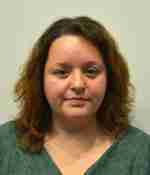
Elisavet Chatzilari
, Cadence
, Cadence
Elisavet holds a degree in Electrical and Computer Engineering from the Aristotle University of Thessaloniki and a PhD in Machine Learning from the University of Surrey. Before joining BETA CAE Systems in 2022, she worked as a Senior Researcher at CERTH, focusing on machine learning applications in computer vision. At BETA, she is a Lead Machine Learning Engineer in the AI team, developing computer vision solutions for CAD/CAE geometry processing and Active Learning methods that enable faster design-space exploration and optimization with less data.

Pavlos Floratos
Cadence
Cadence
Pavlos Floratos is a Lead Engineer at BETA-CAE and has been a member of the Customer Service team for over eight years. He specializes in model building, helping clients optimize their engineering workflows. Pavlos holds a Diploma in Mechanical Engineering (equivalent to B.Sc. + M.Eng.) from the University of Patras and an M.Sc. in Artificial Intelligence from Aristotle University of Thessaloniki.
View Info
Hide Info
The introduction of Finite Element models of the human body has offered novel ways of evaluating vehicle safety and restraint system performance. These so-called Human Body Models (HBMs) aim at providing a detailed, human-centric analysis and allowing a deeper understanding of injury mechanisms, ultimately contributing to safety feature optimization. However, posture and variant limitations pose a significant drawback to their implementation in different simulation scenarios, demonstrating the necessity of efficient handling tools. With the upcoming incorporation of Human Body Models simulations as part of the Euro NCAP assessments in 2029, an even more clear path towards a digital certification process in need of robust simulation set up solutions and result evaluation processes is pointed out.
Elena Alexandri
, Cadence
, Cadence
Elena Alexandri majored in Mechanical Engineering and graduated from Aristotle University of Thessaloniki. Her thesis on subtalar and talocrural joint kinematics was done in collaboration with BETA CAE Systems during her internship at the Crash and Safety Research and Development department. After her graduation, she became part of the Crash and Safety Customer Service department, providing the support for all ANSA Human Body Model related tools.
View Info
Hide Info
This presentation focuses on strategies for driving testing excellence across an organization based on a workshop attended during “WeTest Athens” conference. We will explore how to build testing capabilities at an organizational level for the long-term and how we need to focus on cultivating a quality culture across the company. We will highlight the importance of making an intentional effort to maintain an environment where high standards, continuous improvement and shared values around excellence are embedded in the way people work and think. Testing is not just a phase in the development lifecycle but a shared responsibility and mindset across all teams. We will finish the presentation with a success story from the QA team where the strategic planning to create Squish API helped us address QA challenges raised, and especially during the “Redesign” project. The initial concept and the API evolution over time will be discussed along with the performance problems that were encountered and how they were fixed.
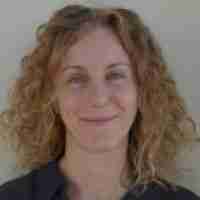
Dimitra Gkipatidou
, Cadence
, Cadence
Dimitra Gkipatidou is a Lead Quality Engineer at BETA CAE Systems, where she has spent nearly a decade advancing simulation software standards, ensuring high quality and reliability. With a background in motorsport engineering, she previously worked with Formula 1 teams as a Data Analysis Engineer. Her career bridges precision, innovation, and a deep commitment to engineering excellence.
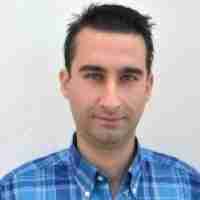
Thomas Tziortzios
, Cadence
, Cadence
Thomas Tziortzios is an Electrical and Computers Engineer with a PhD from Aristotle University of Thessaloniki. He has thirteen years of experience in Quality Assurance, including the last nine years at BETA. His main contributions are in the manual and automated UI/UX testing plus monitoring and improving QA engines.
View Info
Hide Info
This presentation outlines the successful completion of a strategic two-year migration project from Primer to ANSA within General Motors organization. The initiative aimed to modernize and streamline our simulation workflow, particularly in the context of LS-DYNA model preparation and validation. Throughout the project, we encountered and overcame several technical and operational challenges, including the full support and integration of the LS-DYNA numbering schema, the development of a robust check mechanism for LS-DYNA models, and the resolution of performance bottlenecks during LS-DYNA file input in ANSA.
Despite these hurdles, the project team demonstrated resilience and innovation, collaborating closely across departments to ensure a smooth transition. The migration not only enhanced ANSA’s simulation capabilities but also laid the groundwork for future scalability and efficiency in model handling. This presentation will share key learnings, technical solutions, and the impact of this transformation on our engineering processes.

Thanasis Fokylidis
Senior Customer Service Engineering Manager, Cadence
Senior Customer Service Engineering Manager, Cadence
Thanassis Fokylidis studied Mechanical Engineering at the Aristotle University of Thessaloniki from 1999 to 2005. He has been with BETA CAE Systems since 2008, working in the Customer Service Department. He currently serves as the team leader of the Crash and Safety group within the department.
View Info
Hide Info
Olympic Hall III
Cadence
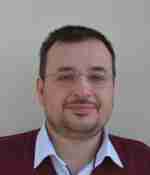
Cadence
READ BIOCadence
Athanasios Mademlis has received the Diploma degree in Electrical and Computer Engineering and the Ph.D. degree in Electrical and Computer Engineering both from Aristotle University of Thessaloniki, Greece, in 2004 and 2009, respectively. He has worked as a researcher for Informatics and Telematics Institute of Centre for Research and Technology Hellas, and as a software developer in the private sector. He is working in the R & D department of BETA CAE systems since 2017.
Cadence
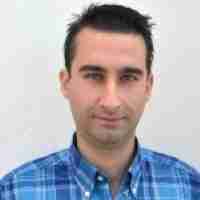
, Cadence
READ BIOCadence
Thomas Tziortzios is an Electrical and Computers Engineer with a PhD from Aristotle University of Thessaloniki. He has thirteen years of experience in Quality Assurance, including the last nine years at BETA. His main contributions are in the manual and automated UI/UX testing plus monitoring and improving QA engines.

Cadence
READ BIOCadence
Anastasios Orfanidis received his Diploma in Mechanical Engineering from the University of Thessaly, followed by an MSc in Computational and Software Techniques in Engineering from the University of Cranfield. He joined BETA in 2020 as part of the Mathematical Research Team. His work focuses on GPU-accelerated geometry processing and surface evaluation algorithms for computer graphics, with an emphasis on exploiting modern hardware capabilities to achieve maximum efficiency and performance.
Cadence
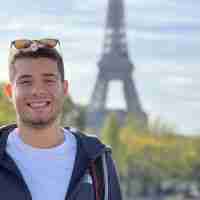
Cadence
READ BIOCadence
Gerasimos Pinas is a Lead Software Engineer at BETA CAE Systems with a Diploma in Civil Engineering and a Master of Science degree in Artificial Intelligence from Aristotle University of Thessaloniki. He specializes in developing advanced computational algorithms to solve complex engineering problems. Gerasimos is passionate about blending Software Engineering & Computational Geometry domains with modern approaches and technologies.

Cadence
READ BIOCadence
Pavlos Floratos is a Lead Engineer at BETA-CAE and has been a member of the Customer Service team for over eight years. He specializes in model building, helping clients optimize their engineering workflows. Pavlos holds a Diploma in Mechanical Engineering (equivalent to B.Sc. + M.Eng.) from the University of Patras and an M.Sc. in Artificial Intelligence from Aristotle University of Thessaloniki.
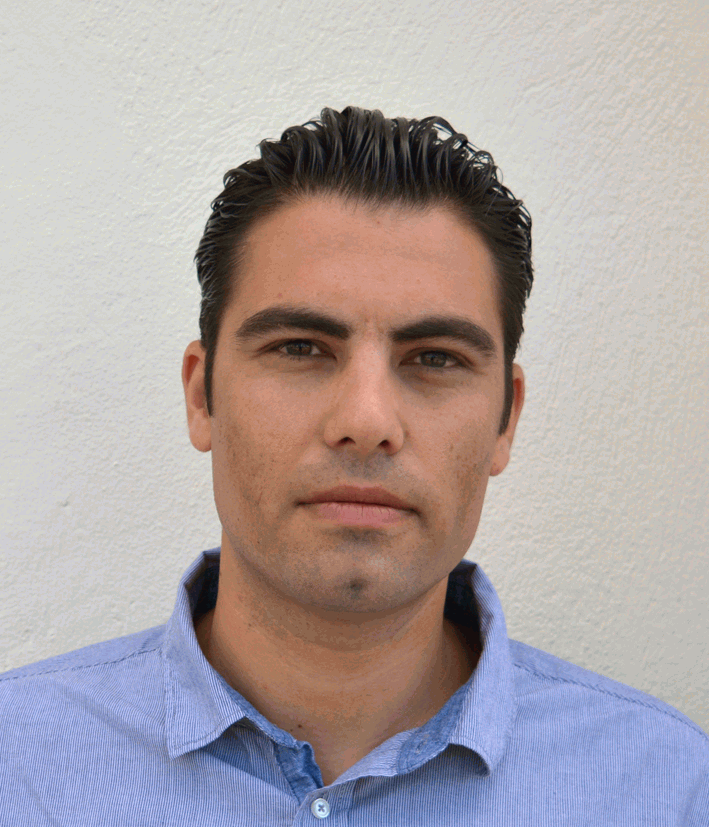
Cadence

Cadence
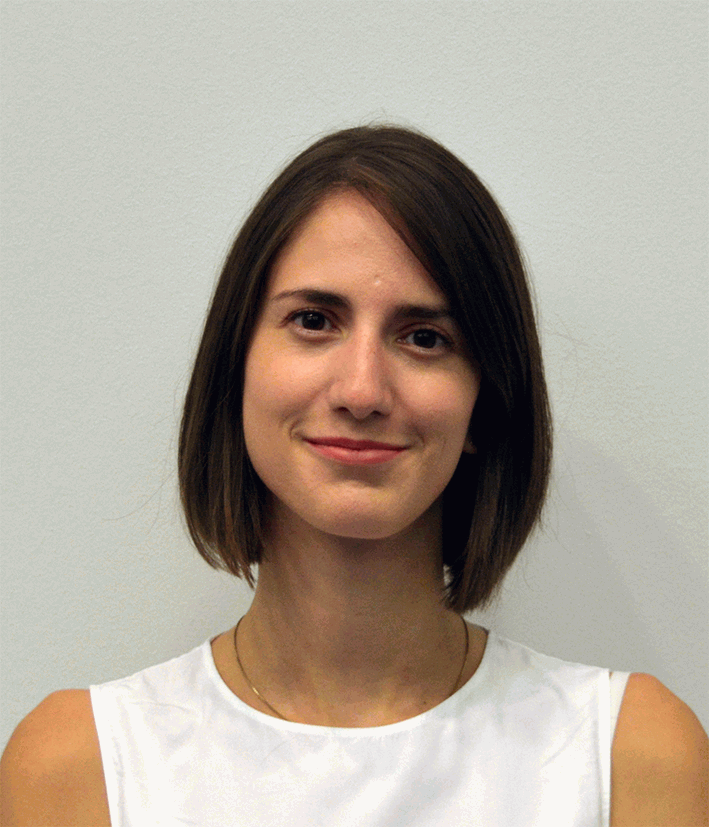
Cadence
,
Cadence

Cadence
READ BIOCadence
Giorgos Strofylas is a Mechanical Engineer with a PhD in Aerospace Engineering, specializing in parametric design, optimization, and Fluid-Structure Interaction (FSI). Over the past decade at BETA CAE Systems, he has contributed to the CFD Decks department by developing advanced tools that streamline CFD simulation workflows and boost computational efficiency. With deep expertise in computational algorithms and scientific computing, Giorgos focuses on delivering robust, scalable solutions for high-performance numerical modeling and simulation.
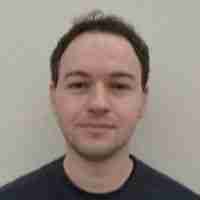
Cadence
READ BIOCadence
Georgios Petkos works for Beta CAE Systems / Cadence since 2017. He holds a Ph.D and an M.Sc. in Artificial Intelligence from the University of Edinburgh, as well as a B.Sc. in Applied Informatics from the University of Macedonia. Prior to working for Beta CAE Systems / Cadence, he worked for several years in the Centre for Research and Technology Hellas and the University of Macedonia.

Cadence
READ BIOCadence
Evangelos Parlantzas is a Senior Software Engineering Manager at Beta CAE Systems, where he has spent over two decades. He leads R&D in seam welds modelling and proximity detection. He holds a degree in Electrical and Computer Engineering from the Aristotle University of Thessaloniki. Passionate about innovation, mentoring, and research, Evangelos is committed to high-quality engineering through thoughtful, collaborative work.
Cadence
,

READ BIO
Vicky Moschou is a Software Engineer with an MSc in Digital Media/Machine Learning and an interdisciplinary PHD in Systems Physiology, bridging Computer Science and Medicine. She joined BETA in 2008 and currently serves as a Senior Software Engineering Manager at Cadence, specializing in Computational Fluid Dynamics (CFD) on the ANSA side. She leads a team with extensive experience in core ANSA technologies and CFD solvers’ integration. Among others, her work focuses on implementation of innovative tools, performance optimization and memory efficiency to deliver high-quality CFD software solutions.

, Cadence
READ BIOCadence
Nikos Kostakis is the UI/UX manager at BETA CAE Systems. He leads the design team in the GUI department, where they focus on creating intuitive and consistent UIs for complex engineering software. With over nine years of expertise in UI design, he specializes in building and maintaining scalable design systems and crafting pixel-perfect iconography. His multidisciplinary background in visual communication spans digital product design, motion graphics for live TV broadcasts (sports events, including MXGP), and brand identity development. Nikos is passionate about bridging aesthetics and functionality, ensuring that design elevate the overall user experience without compromising performance.
Cadence

, Cadence
READ BIOCadence
Markus Herbst studied physics at WWU Münster and completed his PhD in theoretical solid-state physics in 2000. After a postdoctoral position at Hitachi Labs in Cambridge, UK, he joined the Ford Motor Company in Cologne, Germany in 2001, where he worked as a CAE engineer in the Body NVH department. He also began a teaching career in 2006, serving as a lecturer and professor at RFH Cologne. In 2017, he joined BETA CAE and has since been working in the customer service department. His expertise encompasses both the theory and application of NVH, particularly in the context of the finite element method.
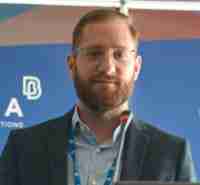
, Cadence
READ BIOCadence
He is an Application Engineer with the area of expertise being in the Simulation Process and Data Management and holds a Master of Science in Artificial Intelligence. With a robust academic background and practical experience, his is committed to contributing to the development and optimization of simulation applications by improving processes, developing tools and conducting research and analysis to drive innovative solutions. He is part of BETA CAE Systems since January of 2021.
, Cadence
READ BIOCadence
Elena Alexandri majored in Mechanical Engineering and graduated from Aristotle University of Thessaloniki. Her thesis on subtalar and talocrural joint kinematics was done in collaboration with BETA CAE Systems during her internship at the Crash and Safety Research and Development department. After her graduation, she became part of the Crash and Safety Customer Service department, providing the support for all ANSA Human Body Model related tools.
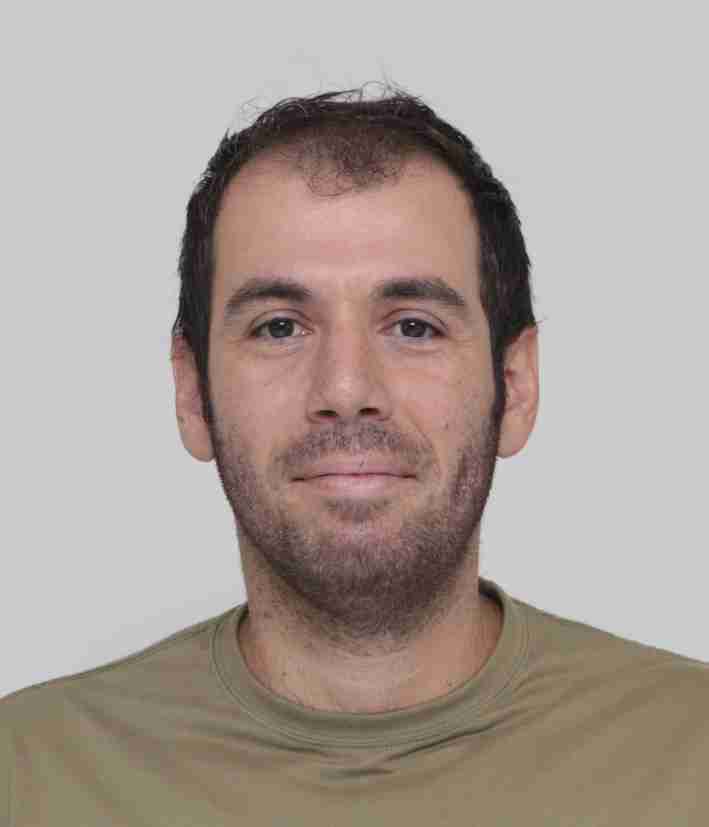
, Cadence
READ BIOCadence
Dimitris Skoutelakos is a Software engineering manager at BETA. He studied mechanical engineering at the Aristotle university in Thessaloniki and holds a master's in computational science from the technical university of Munich. After working as CFD project engineer for the automotive industry in Germany he joined BETA and the meshing team of ANSA as a software developer. For over a decade he has worked on the expansion of the ansa CFD volume meshing portfolio with primary focus on unstructured volume meshing.
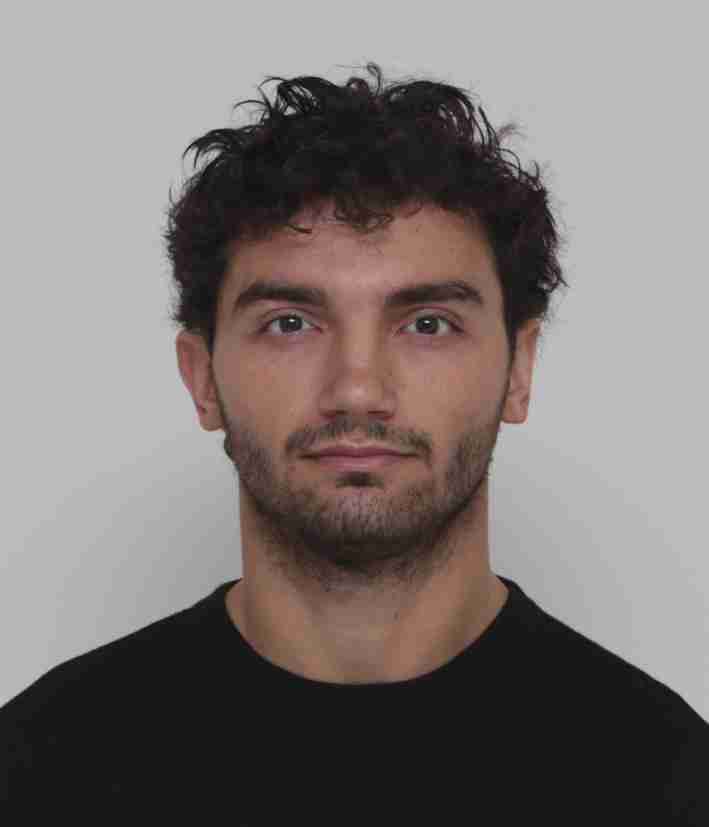
, Cadence
READ BIOCadence
Savvas Bollas is an Electrical and Computer Engineer, a graduate of the Aristotle University of Thessaloniki. He began a PhD in Embedded Systems but soon transitioned into industry after being offered a position at BETA CAE Systems. Drawn by the real-world challenges and opportunities, he chose to fully dedicate himself to software engineering. For the past 14 years, Savvas has been a key contributor at BETA CAE, focusing on the development and optimization of preprocessing workflows in CAE simulation. His expertise lies in the volume-to-surface approach, where he not only drives technical innovation but also mentors and inspires the team’s emerging engineering talent.

, Cadence
READ BIOCadence
Apostolis Poulias is a Lead Software Engineer based in Thessaloniki, with a degree in Mechanical Engineering from the National Technical University of Athens (NTUA). After starting his career in customer service, he transitioned into software development. He enjoys combining his experience in both roles to solve problems effectively and build solutions that meet user requirements.

, Cadence
READ BIOCadence
Yannis Koskinaris is a Senior Software Engineering Manager at BETA CAE Systems). A lifelong Java engineer with an MSc in Systems Design for Internet Applications (2005), he’s worked on SPDRM since its inception, guiding its evolution and is passionate about server-side development and databases. His team focuses on performance, reliability, and developer experience.
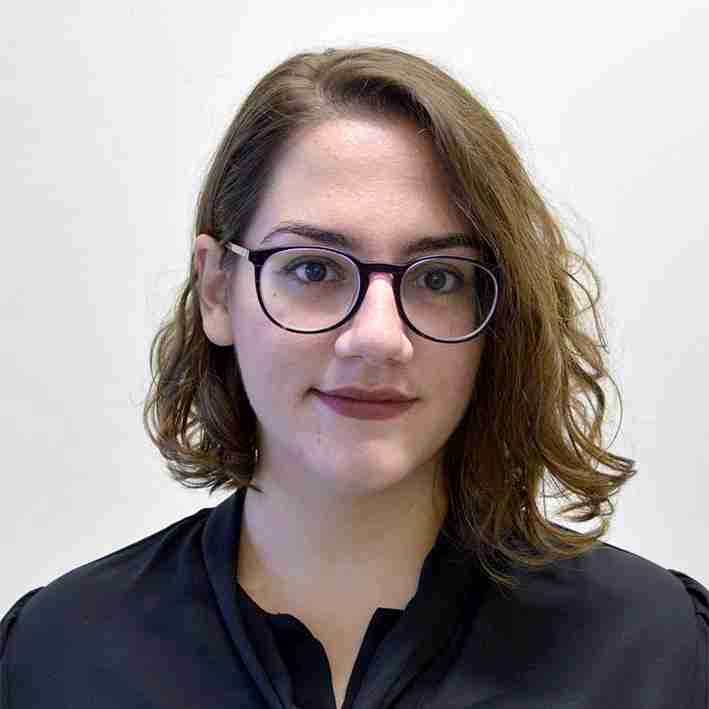
, Cadence
READ BIOCadence
Athina Ioakeimidi (she/her) is a Software Engineer at BETA CAE Systems, where she has been part of the Python Development Team for the past 4 years. She holds a diploma in Electrical and Computer Engineering from the National Technical University of Athens (2021). Athina specializes in developing Python-based tools and projects, both for customer applications and core functionality. Her work focuses on enhancing performance, maintaining existing solutions, and providing expert support in Python programming, the BETA Suite API, and Visual Studio Code. In her presentation, she will share insights from her experience in Python Development with Visual Studio Code and Copilot, highlighting practical solutions and development strategies.
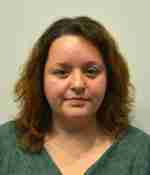
, Cadence
READ BIOCadence
Elisavet holds a degree in Electrical and Computer Engineering from the Aristotle University of Thessaloniki and a PhD in Machine Learning from the University of Surrey. Before joining BETA CAE Systems in 2022, she worked as a Senior Researcher at CERTH, focusing on machine learning applications in computer vision. At BETA, she is a Lead Machine Learning Engineer in the AI team, developing computer vision solutions for CAD/CAE geometry processing and Active Learning methods that enable faster design-space exploration and optimization with less data.
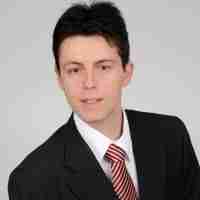
, Cadence
READ BIOCadence
Argyrios Radopoulos is a mechanical engineer specializing in computational mechanics, numerical simulation, software development, and business management. He has been with BETA CAE Systems (Cadence Design Systems, SDA business unit) since 2013 in the Customer Service department. His expertise in computational mechanics ranges from classical finite and boundary element methods and computational fluid dynamics to novel approaches such as isogeometric analysis and the finite cell method. He has extensive experience in Python software engineering, developing novel and robust tools for engineering design and simulation, in particular custom tools for META. Beyond his engineering and software work, he is responsible for the documentation of several products as well as developing the guidelines, style guide, and documentation publishing infrastructure of BETA CAE Systems.
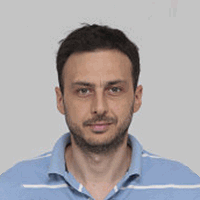
, Cadence
READ BIOCadence
Konstantinos Ntamagkas is a Senior Software Engineering Manager with almost 20 years of experience in RnD at BETA CAE Systems, having successfully contributed to major company milestones. He graduated from the department of Electrical and Electronic Engineering at Aristotle University of Thessaloniki and holds a MSc in Telecommunications. He is passionate about driving innovation and improving processes. He is proud to be part of this company's journey, while committed to fostering collaboration and creativity, maintaining team morale and ensuring every team member feels their contribution matters.
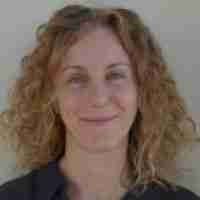
, Cadence
READ BIOCadence
Dimitra Gkipatidou is a Lead Quality Engineer at BETA CAE Systems, where she has spent nearly a decade advancing simulation software standards, ensuring high quality and reliability. With a background in motorsport engineering, she previously worked with Formula 1 teams as a Data Analysis Engineer. Her career bridges precision, innovation, and a deep commitment to engineering excellence.

, Cadence
READ BIOCadence
Ioannis Chalkidis is currently serving as a Senior Software Engineering Manager, based in Thessaloniki, Greece. Ioannis holds an integrated master and a PhD in Mechanical Engineering from Aristotle University of Thessaloniki, Greece. He joined BETA CAE Systems in 2007 and his expertise is in CAD Data structures, computational geometry and Isogeometric Analysis.
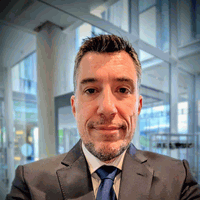
, Cadence
READ BIOCadence
Nikolas Drivakos is a Mechanical Engineer with a PhD in Machine Elements and Machine Design from Aristotle University of Thessaloniki. For nearly two decades, he has been contributing to BETA, where he leads the team responsible for ANSA meshing, model build in Customer Service. His work focuses on advancing simulation workflows and ensuring high-fidelity modeling for complex engineering challenges. He combines deep technical knowledge with a hands-on approach to problem-solving. Nikolas is passionate about continuous improvement and mentoring the next generation of engineers.

, Cadence
READ BIOCadence
Bezdemiotis Haris holds a degree in Mechanical Engineering from Aristotle University of Thessaloniki. Since 2018, he has been part of the Customer Service team at BETA CAE Systems, supporting Geometry, Mesh and Model Build applications.
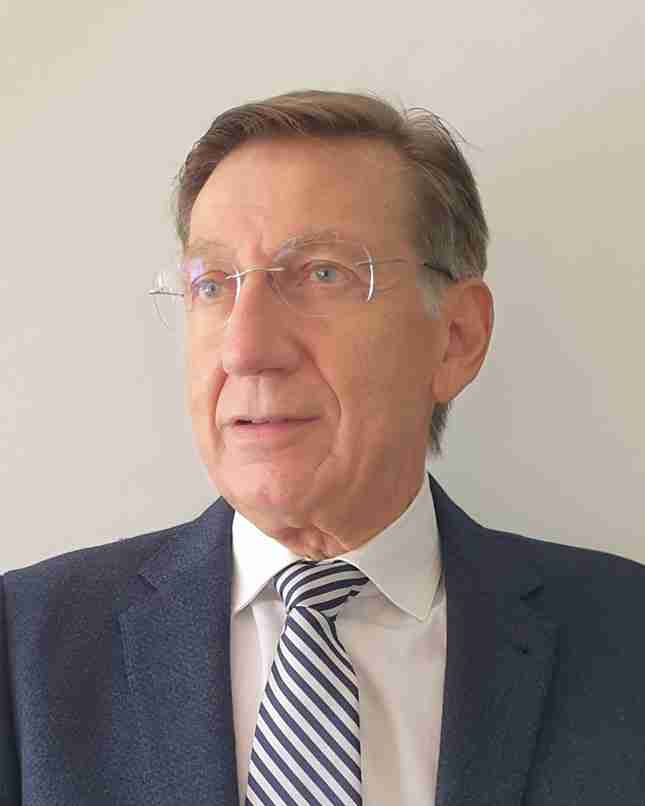
, School of Mechanical Engineering, Aristotle University of Thessaloniki
READ BIOSchool of Mechanical Engineering, Aristotle University of Thessaloniki
Prof. Mihailidis was born in Thessaloniki and studied Mechanical and Electrical Engineering at Aristotle University of Thessaloniki, where he also earned his PhD in Mechanical Engineering. He joined the School of Mechanical Engineering as a Lecturer and advanced through the ranks to Full Professor.
In 2010 he succeeded the late Prof. Athanassiadis as Director of the Laboratory of Machine Elements and Machine Design. After retiring in 2022, he was honored with the title of Professor Emeritus.
Prof. Mihailidis has taught courses in Machine Elements, Tribology, Automotive Engineering, and Engineering Design. He has supervised more than 20 doctoral dissertations in Greece and abroad and continues to mentor PhD candidates. His research output includes over 100 published papers.
He is a founding member of the Balkan Tribological Association and the Balkan Association of Power Transmissions, and a member of WiGeP (Wissenschaftliche Gesellschaft für Produktentwicklung).

, Cadence
READ BIOCadence
Zafeiria Kanellia has been with Beta CAE Systems / Cadence since 2021 the Customer Service Engineering team. She holds a diploma in Mechanical Engineering from the Aristotle University of Thessaloniki and was an active member of the Aristotle Racing Team for two years. Outside of work, she loves exploring places off the tourist map and riding her motorcycle.

, Cadence
READ BIOCadence
Dimitris Zafeiropoulos leads the Meshing R&D Team within the Geometry Division of ANSA, bringing over 25 years of experience in simulation-driven design. With a PhD in Computer-Aided Engineering, he has played a pivotal role in advancing meshing technologies and user interface innovation, including the recent ribbon-based UI transformation in ANSA.

Senior Customer Service Engineering Manager, Cadence
READ BIOCadence
Thanassis Fokylidis studied Mechanical Engineering at the Aristotle University of Thessaloniki from 1999 to 2005. He has been with BETA CAE Systems since 2008, working in the Customer Service Department. He currently serves as the team leader of the Crash and Safety group within the department.
, Cadence
READ BIOCadence
Konstantinos Rachoutis graduated from the Department of Mechanical and Aeronautical Engineering at the University of Patras. He joined BETA CAE Systems almost 3 years ago, working in the Morphing, Optimization, and AI department.

Cadence
READ BIOCadence
Stelios Karapantazis graduated from the department of Electrical and Computer Engineering at Aristotle University of Thessaloniki. He holds a PhD in telecommunication networks. Since 2008, he has been working in BETA CAE Systems as a member of the META development team. He has contributed to various project, such as the development of software reporting solutions and the compression of 3D data and simulation results.
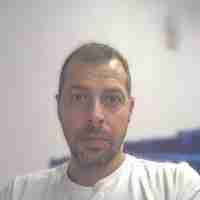
, Cadence
READ BIOCadence
I currently serve as Senior Software Research and Development Manager at BETA CAE Systems, focusing on the Morphing Tool of ANSA. I joined BETA in 2009. I hold a diploma in Mechanical Engineering from the Aristotle University of Thessaloniki and a Master’s degree in Computer Science. Outside of work, I’m a proud father of two daughters.
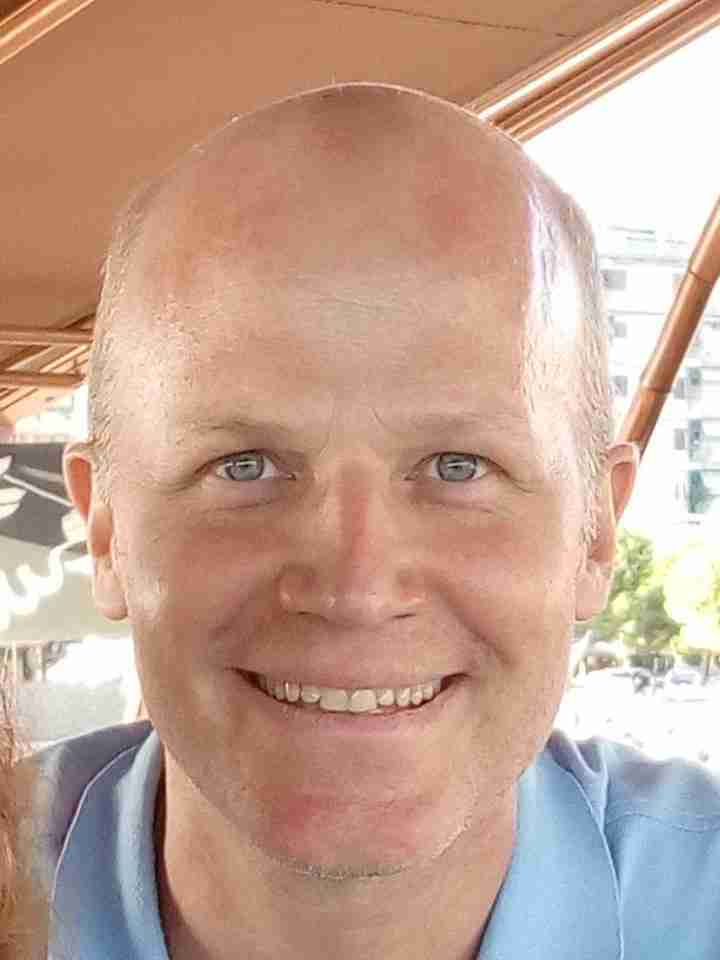
Cadence
READ BIOCadence
Vangelis Skaperdas is the Engineering Director of the CFD team of Customer Service at BETA CAE. He studied Aeronautical Engineering at Imperial College and holds a master’s degree in Automotive Engineering from Cranfield University.
He joined BETA CAE in 2001. Since then his focus is to help enhance ANSA and META functionality in the CFD field, so as to grow throughout the motorsports and automotive sectors but also in other industries like the aerospace and defense.
He leads a team of ten engineers who share his goal of excellence in the customer service of the two software, helping build the best reputation throughout the industry.

Corporate VP - Product Engineering, SDA , Cadence
READ BIOCadence
Vivek Mishra serves as Corporate Vice President in Systems Design Analysis at Cadence. As part of the Business Unit, Vivek is responsible for Product Engineering and Customer Engagement - focusing on Systems Design and Analysis for 3DICs, system of PCBs, to automobiles, aerospace robotics and data centers. Vivek and team focus on key customer engagements around the world, driving systems design and analysis as part of the intelligent system design strategy. Prior to this role, Vivek was with Digital and Signoff group leading Product Engineering and before that with Magma driving field engineering for digital products. Before joining Magma, Vivek was into chip design, owning RTL to GDS product development in optical networking space. Vivek attended Pune University, where he earned a bachelors in electronics engineering
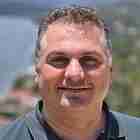
Cadence
READ BIOCadence
I was a Chief Technology Officer at BETA CAE Systems until its acquisition by Cadence in 2024. In 2007, I earned a Ph.D. in Mechanical Engineering from Aristotle University of Thessaloniki, Greece.
My journey with BETA CAE began around 1999 when I joined the early team and initiated the development of META post-processor. Since then, I have enjoyed being part of the R&D team, where, together with my colleagues from many functional teams, we drive innovation and push technological advancements across our entire product portfolio.

Cadence
READ BIOCadence
Platon Oikonomou Galatis is a Senior Manager at BETA CAE Systems, where he has been working since 2008. He leads a team of five engineers in the Geometry department, focusing on developing tools for CAD modeling and geometric processing. His work centers around geometric algorithms, sketching systems, and robust geometry handling in simulation software. With deep technical expertise and years of hands-on experience, Platon contributes to shaping the core capabilities of BETA's software suite.

Cadence
READ BIOCadence
Panagiotis Mantzopoulos earned his MEng in Mechanical Engineering & Aeronautics from the University of Patras and later pursued an MSc in Computational and Software Techniques in Engineering at Cranfield University. Since 2020, he has been a dedicated member of BETA CAE Systems SA, specializing in Simulation Process and Data Management field. His contributions span across product development, process automation, technical support and presales activities with a particular focus on modular assembly and data management.
Cadence
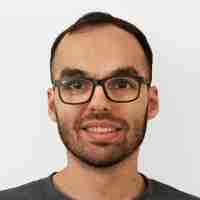
Cadence
READ BIOCadence
Dimitrios Tsitselas earned his degree in Electrical and Computer Engineering and is currently pursuing a Master’s in Artificial Intelligence. He works as a Lead Software Engineer on the SPH Solver team, focusing on geometric algorithms and multibody simulation. His role involves building high-performance solutions for complex physical simulations and computational geometry challenges. Dimitris is passionate about numerical methods and scalable computing for engineering applications.
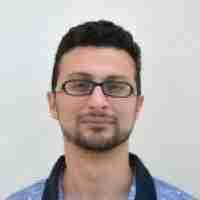
Cadence
READ BIOCadence
Georgios Ouzounoudis is a Principal Software Engineer in the BETA CAE Systems Graphics Team. He spearheaded the overhaul of META Graphics Kernel, expanding and unifying it with ANSA and researching for new ways to accelerate rendering of FEA models. He loves writing shaders and re-thinking solutions for problems with massive parallelism in mind.

Professor, National Technical University of Athens - Polytechnic
READ BIONational Technical University of Athens - Polytechnic
Christos Papadopoulos is a Professor at the School of Naval Architecture & Marine Engineering of the National Technical University of Athens, joining the faculty of the Department in 2007. He holds a Diploma in Naval Architecture & Marine Engineering (1997) and a Ph.D. in Marine Engineering (2001), both from NTUA. His research activities include hydrodynamic lubrication of journal and thrust bearings using Computational Fluid Dynamics (CFD), effects of artificial surface texturing on the performance of lubrication contacts, dynamics of marine propulsion and power transmission systems, shaft alignment of marine propulsion systems, numerical simulation of sound propagation and sound-structure interaction, and modeling and identification of dynamical systems, with emphasis on coupled structural acoustic systems. He teaches Mechanical Drawing, 3-D Computer Aided Design, Machine Elements, Ship Propulsion Systems, Ship Auxiliary Systems and C++ Programming. He serves as a regular reviewer of more than 30 journals in the fields of Marine Engineering, Tribology, and Vibrations/Acoustics. His research work includes more than 85 peer-reviewed publications in journals and international Conferences; it has received over 1200 citations. He has received the Best Paper Award by the Microturbines & Small Turbomachinery Committee of the American Society of Mechanical Engineers (ASME) in June 2010, and a Scientific Award for Excellence by the Greek Ministry of Education in December 2012. He has participated in several research projects funded by the EU, the Greek Government and the industry. He has long experience as a consultant to the Maritime Industry, in the field of marine engineering, with emphasis on shaft alignment calculations/measurements, FEM/CFD analyses, vibration and acoustics measurements and calculations. He has been involved as a technical expert in more than 20 cases of accidents/failures of mechanical components or systems in the maritime industry. He is also co-founder of ShipReality Inc., a technology startup focused on developing next-generation mixed reality (MR) software for maritime industry digitalization, automation and sustainability.

Senior Group Director in Product Engineering , Cadence
READ BIOCadence
Sam was a member of the early team at BETA and holds a Doctorate in Mechanical Engineering. Over the past 35 years, he has served as a software developer, customer service engineer, and, until recently, as Chief Communications Officer and Head of Customer Service. He is currently a Senior Group Director in Product Engineering and a member of the Board of Directors at BETA CAE Systems International.







Yes, you’ll need to fill out our registration form to gain access to the event. Please fill in the registration form with some basic information to get started.